Oldest cities in America
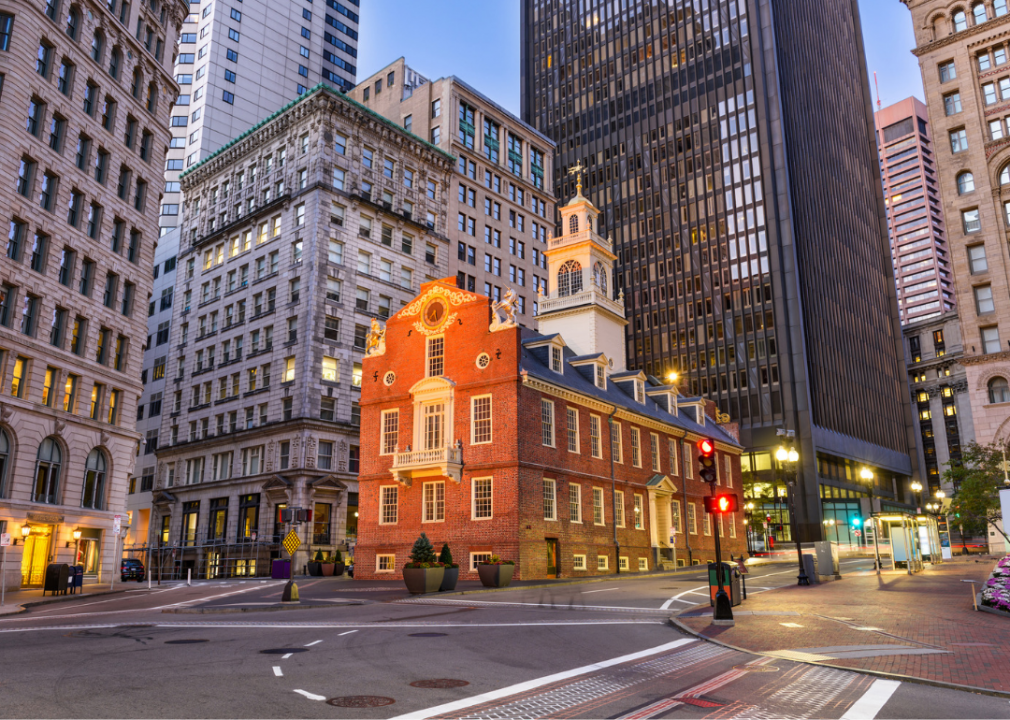
Sean Pavone // Shutterstock
Oldest cities in America
Brown County Courthouse in Green Bay, Wisconsin.
American history conjures images of tricorn hats, the “Star-Spangled Banner,” and cobblestone streets in quaint colonial towns. While the colonial era is certainly part of American history, it’s only one small part of it. Evidence of humans inhabiting North America dates back 13,000 years, with some indication of human settlements stretching back as far as 20,000 years ago. Many millions of people have called the continent home over those centuries, with indigenous people, European explorers, merchant traders, and early settlers all leaving their marks throughout America’s complicated history. Many towns, villages, and cities that early Americans created over the last 1,000 still exist in some form today.
To learn more about them, Stacker compiled a list of the nation’s 50 oldest remaining cities. Though you’ll find some well-known historical locations on this list, you’ll also encounter surprises—some of which you’ve probably never heard of. From Native American pueblos in the Southwest to storied colonial towns in the Northeast, these cities criss-cross nearly every part of the United States: Midwestern towns founded by French missionaries; oceanside locales founded by Spanish admirals; even large cities founded by Quaker leaders.
The variety of these cities reveals the diversity of the United States—from sea to shining sea. Read on to find out what cities in your state or region made the cut and discover which state boasts a settlement dating back to the year 1000. Just be warned: You might be itching to take a cross-country road trip after reading about these fascinating historical locations.
You may also like: Best cities for young professionals
![]()
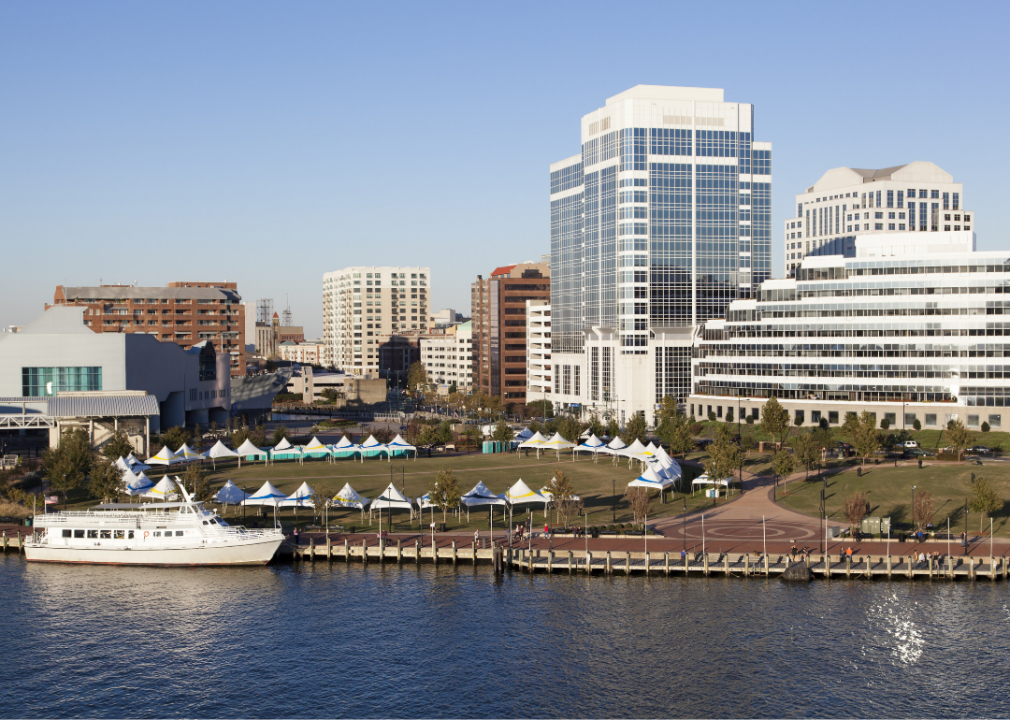
Ramunas Bruzas // Shutterstock
1682: Norfolk, VA
Norfolk is located on the Chesapeake Bay and has always been a port city—you can find the largest naval base in the world there. In the 1600s, the 50 acres of land that became the town of Norfolk was purchased for 10,000 pounds of tobacco.
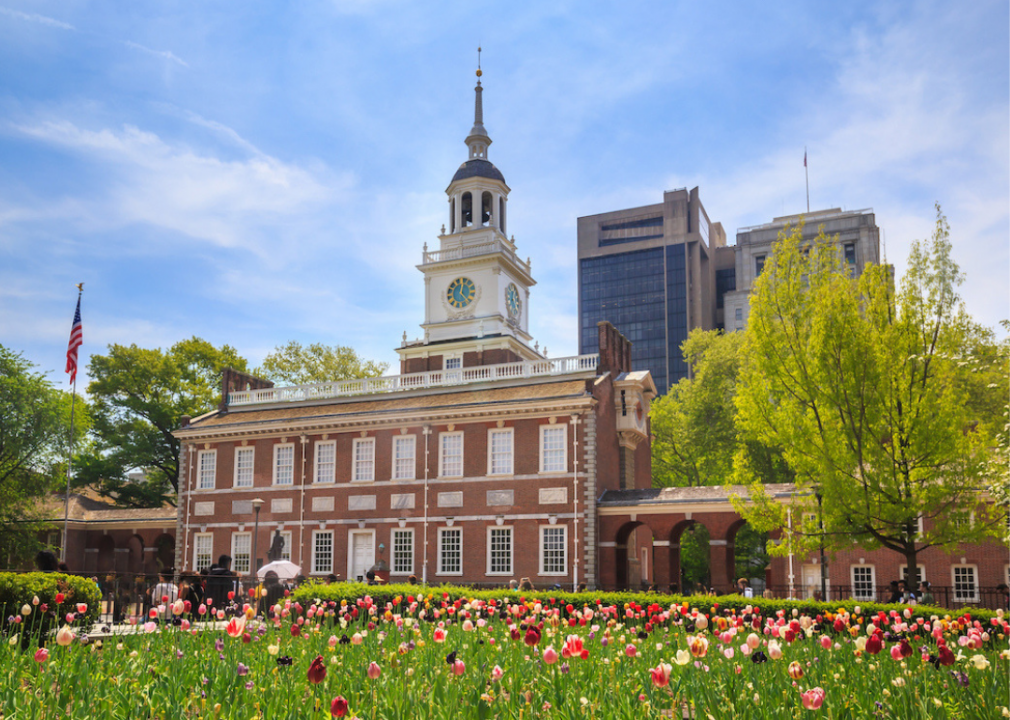
f11photo // Shutterstock
1681: Philadelphia, PA
Though the City of Brotherly Love wasn’t founded until 1681, the Lenape had lived in the area since 8000 B.C. When Quaker and pacifist William Penn received the charter for the Pennsylvania colony in 1681, he signed a peace treaty with Lenape leader Tamanend. A few years later, in 1688, Philadelphians signed the Germantown Petition Against Slavery, which in the New World marked the first organized protest against slavery.
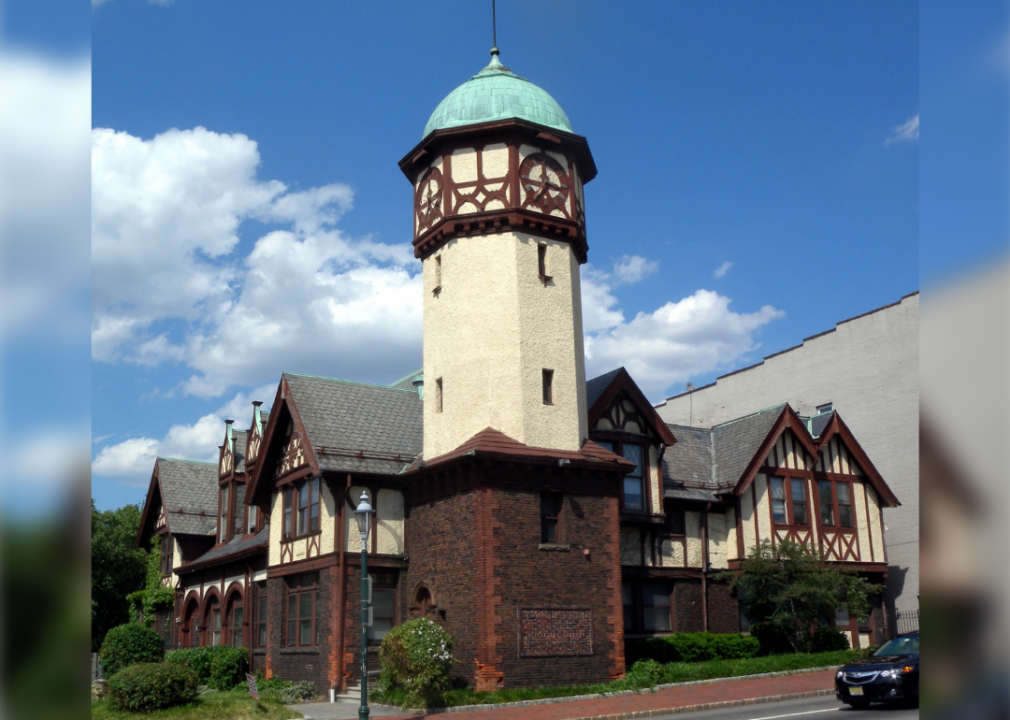
Jim.henderson // Wikimedia Commons
1680: South Orange, NJ
Farming families moved west from Newark into South Orange in the late 1600s, marking the beginning of this New Jersey town. South Orange remained a farming community until the 1850s when attorney John Gorham Vose began to purchase large tracts of land and build huge, elaborate homes.
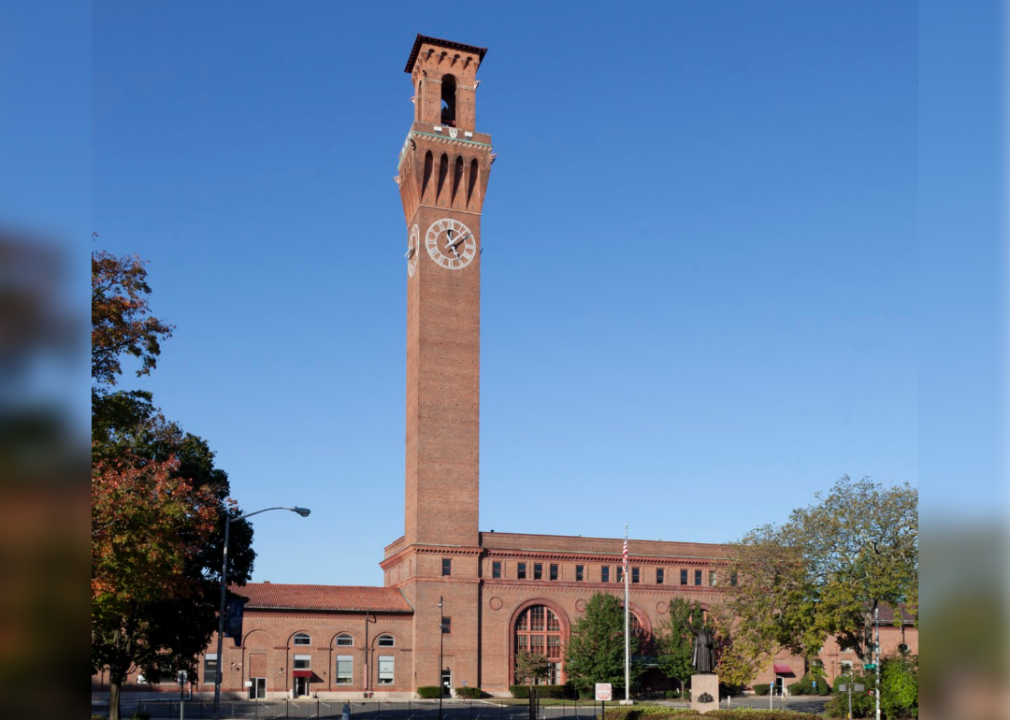
Carol M. Highsmith/Library of Congress // Wikimedia Commons
1674: Waterbury, CT
Waterbury was originally known as Mattatuck—from the Algonquin word for “place without trees”—but was renamed in 1686. The citizens ultimately decided to call the town Waterbury because of all the streams that flow into the Naugatuck River.
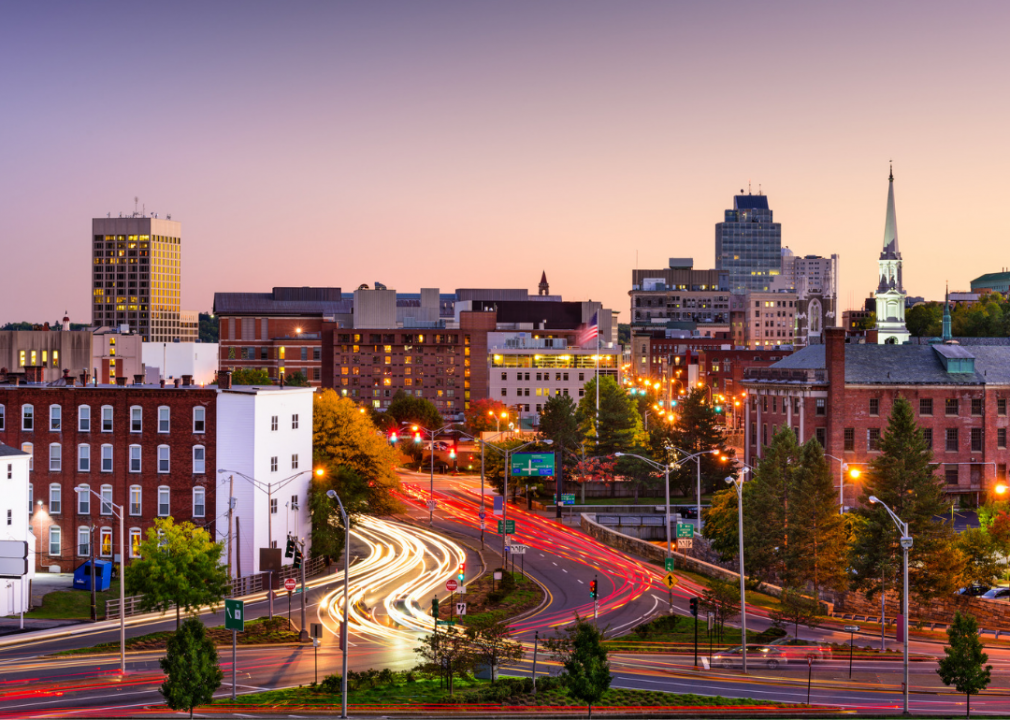
Sean Pavone // Shutterstock
1673: Worcester, MA
First settled in 1673 as Quinsigamond, the town now known as Worcester was abandoned during King Philip’s War and not settled permanently again until 1713. It’s the first place in the Commonwealth of Massachusetts where the Declaration of Independence was read, and also the place where the monkey wrench was created.
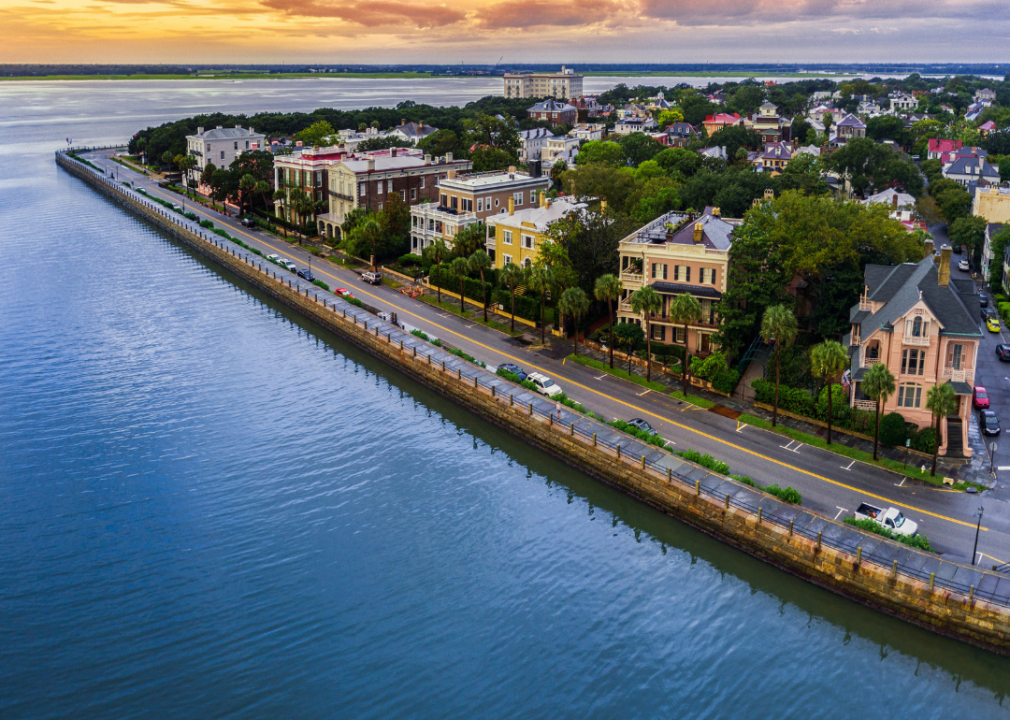
jdross75 // Shutterstock
1670: Charleston, SC
Initially called Charles Towne and named after Charles II, this hub of Southern culture was founded by English colonists in 1670. Charleston was the first place settled in South Carolina and the commercial center for the indigo and rice trades.
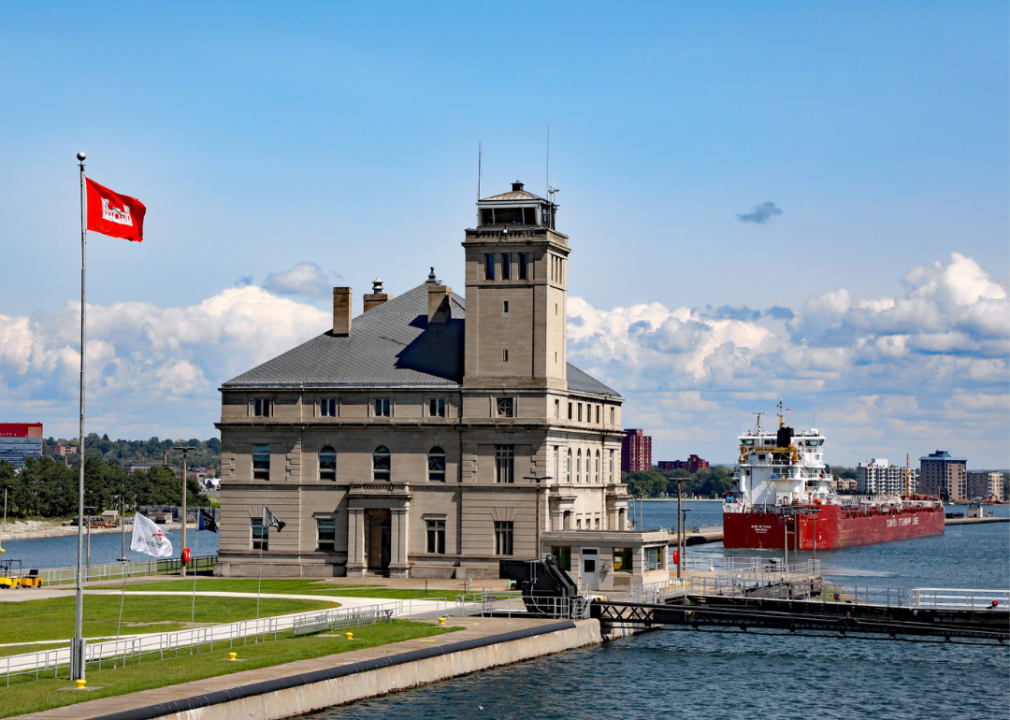
Thomas Barrat // Shutterstock
1668: Sault Ste. Marie, MI
Long before European settlers arrived in the area, Native Americans gathered at what would eventually become Sault Ste. Marie to fish in the river that connects Lake Superior and Lake Huron. In the 1600s, French missionaries and fur traders discovered the area and named the growing town Sault Ste. Marie in honor of the Virgin Mary.
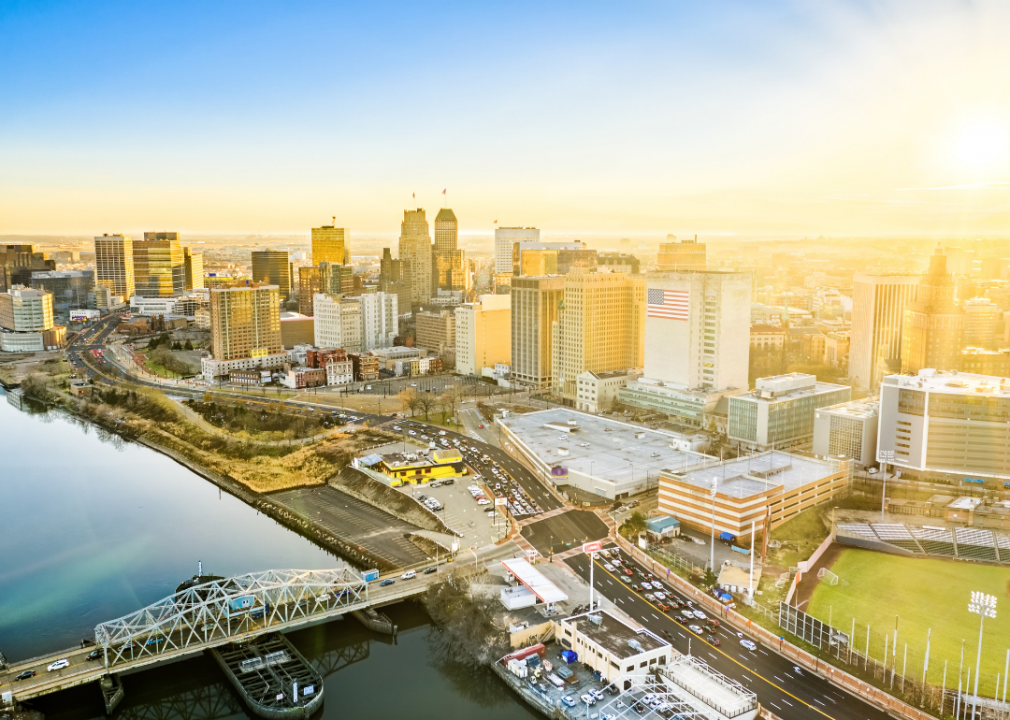
mandritoiu // Shutterstock
1666: Newark, NJ
Although Newark was originally founded by Puritans looking to create their own theocracy, it quickly morphed into an industrial city. In the 1800s, Newark became known for its breweries and leather factories, while today, it is the second-leading insurance seller in the country.
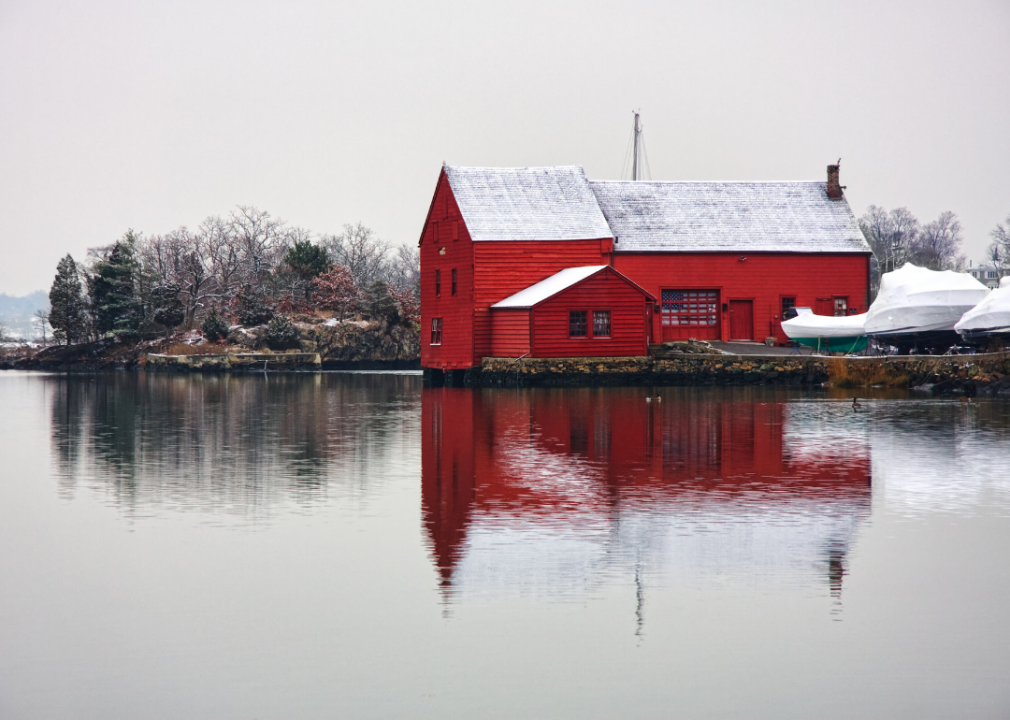
June Marie Sobrito // Shutterstock
1660: Rye, NY
In 1660, three residents signed an agreement with the local Siwanoy tribe to purchase the land that would eventually be called Rye—though, at the time, they called it Hastings after the English town of the same name. The early economy focused on farming, carpentry, and other skilled trades; however, today, many residents commute to nearby New York City for work.
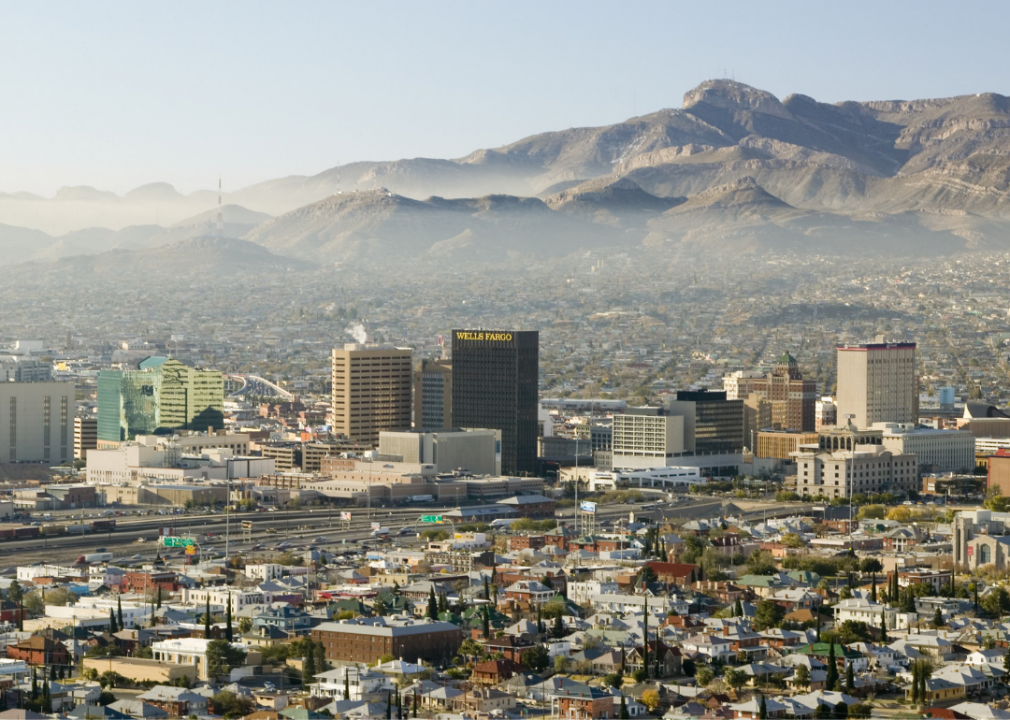
Joseph Sohm // Shutterstock
1659: El Paso, Texas
The establishment of Mission Nuestra Señora de Guadalupe by Franciscan monks in 1659 constitutes the founding of El Paso. However, it didn’t become a part of the United States until 1848, when the U.S. Army built a post there.
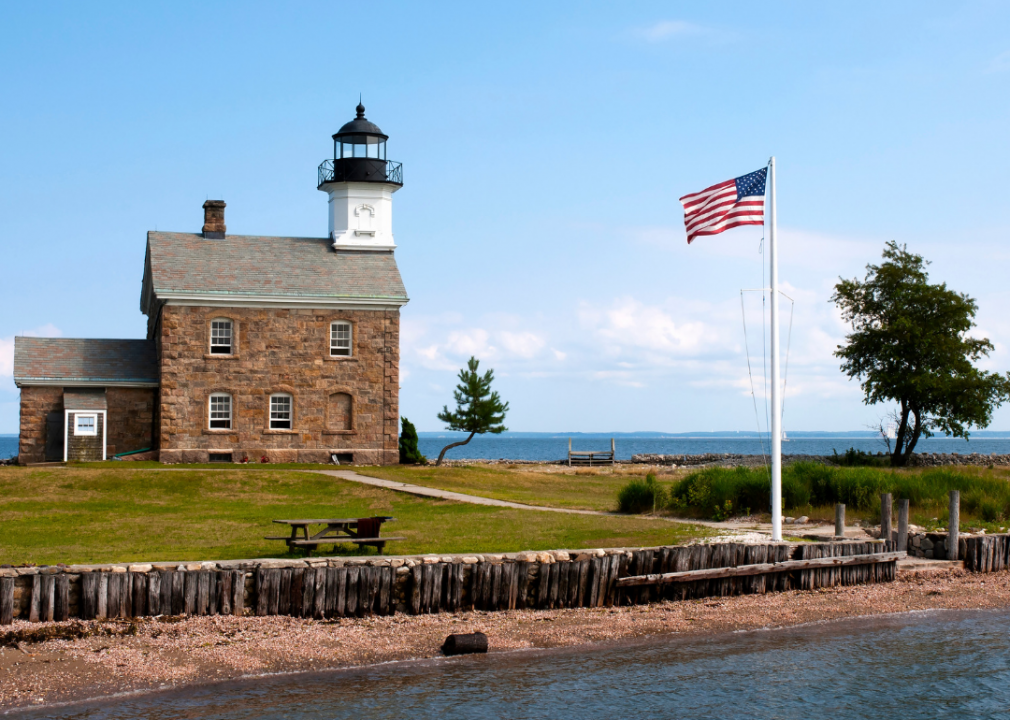
Allan Wood Photography // Shutterstock
1651: Norwalk, CT
Though Norwalk wasn’t settled until 1649 and incorporated until 1651, the land was actually purchased more than 10 years before. In the 1800s, Norwalk became a hotspot for oyster farming and boasted the highest number of steam-powered oyster boats in the world.
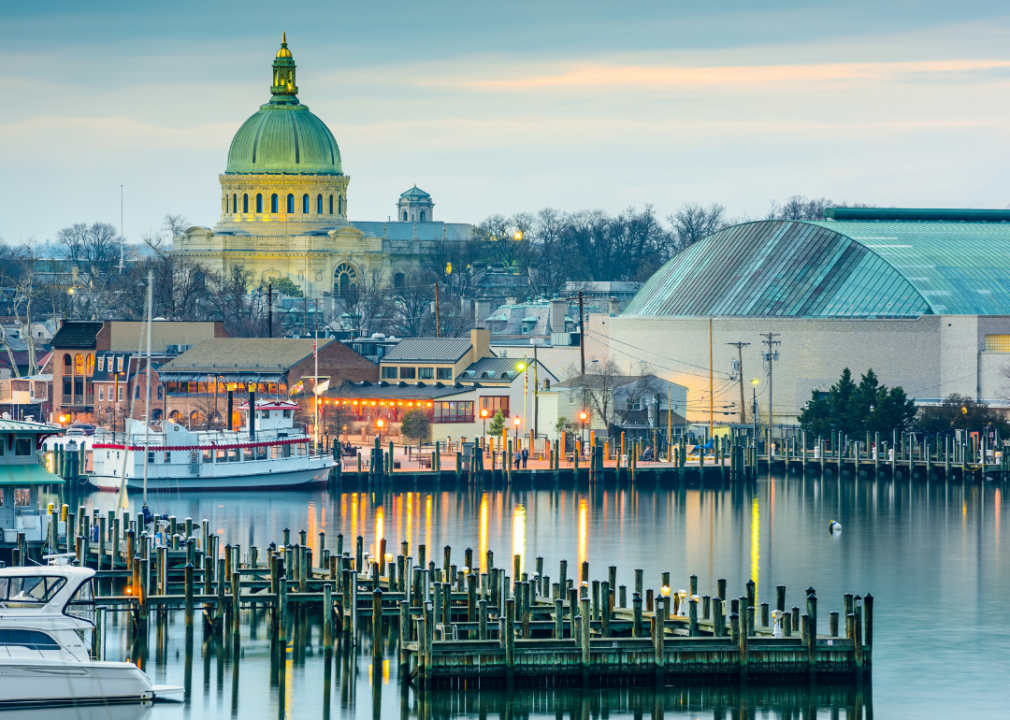
Sean Pavone // Shutterstock
1649: Annapolis, MD
Annapolis is known as the “Athens of America” because of its cultural attractions and social scene—the city draws over 4 million tourists annually. The town was originally called Providence but was renamed Anne Arundel’s Towne and then eventually Annapolis.
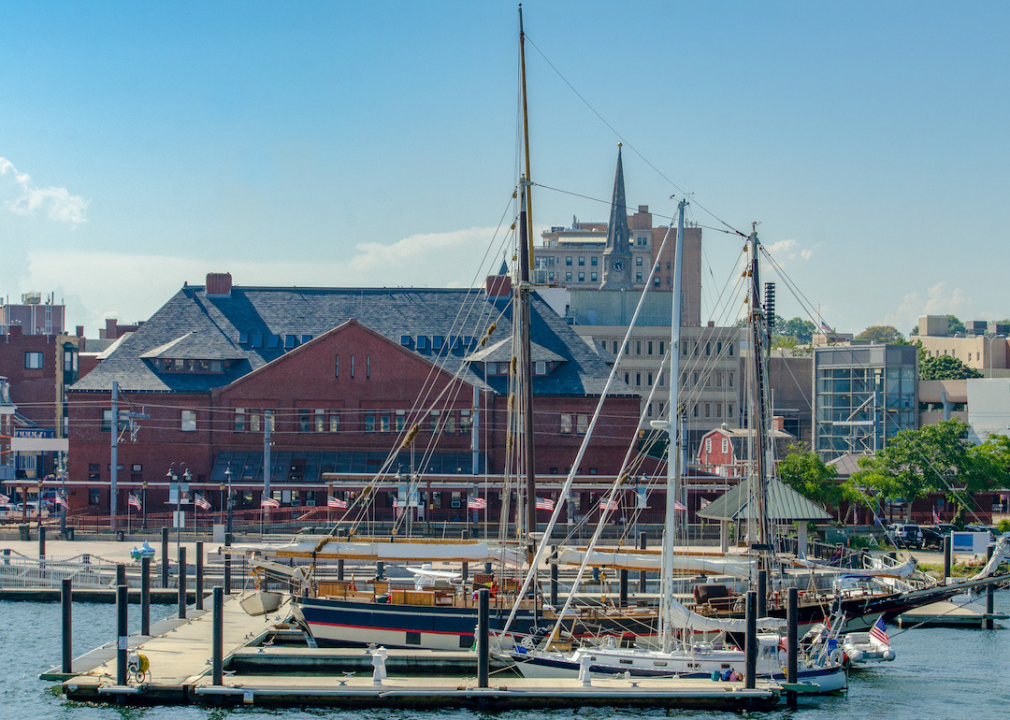
Laura Stone // Shutterstock
1646: New London, CT
John Winthrop the Younger founded this port on the Long Island Sound in 1646, though it was called Pequot until 1658. The first printing press in Connecticut was also established there in 1709.
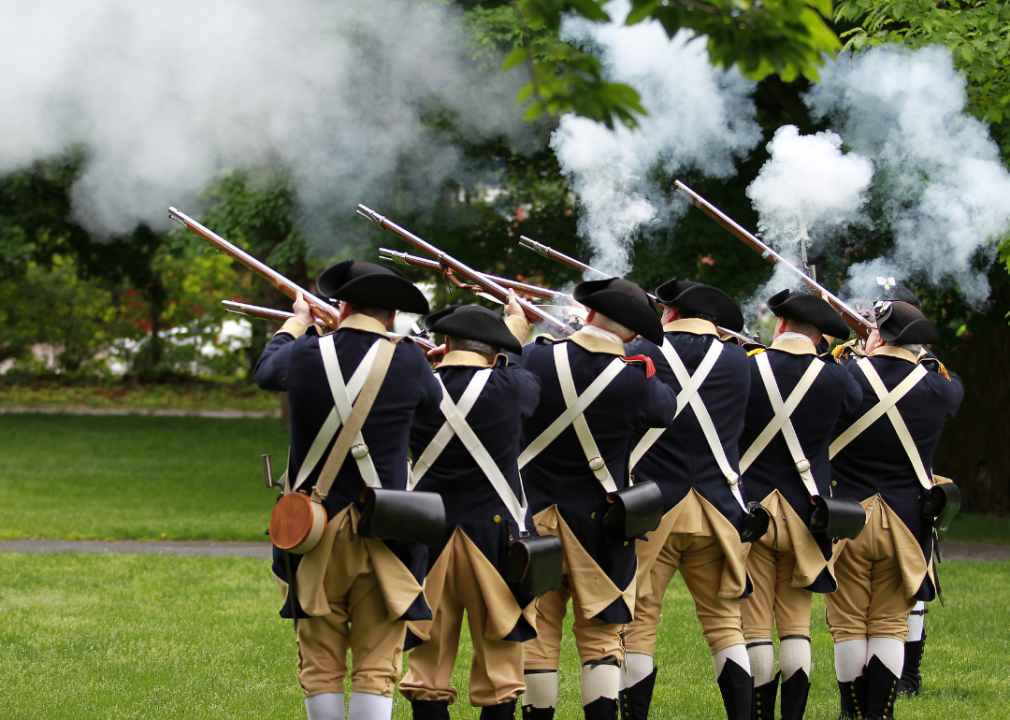
flysnowfly // Shutterstock
1642: Lexington, MA
You probably know this Massachusetts town as the site where the first shots of the Revolutionary War were fired in 1775. In fact, the Battle of Lexington and Concord is reenacted every April on the town green.
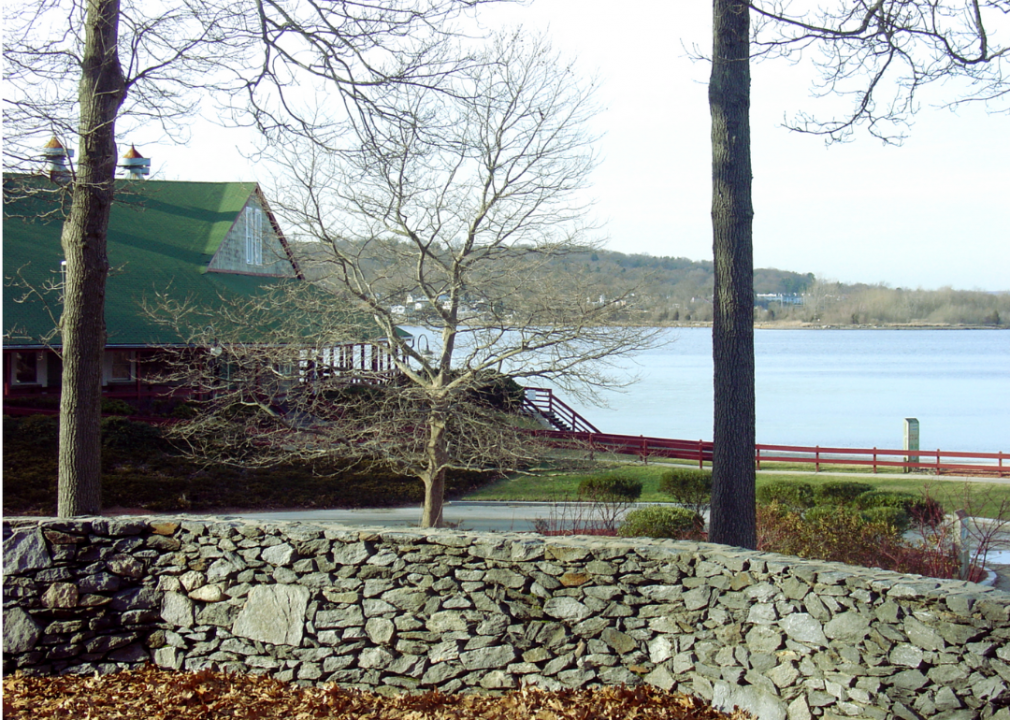
Rhododendrites // Wikimedia Commons
1642: Warwick, RI
In 1642, Samuel Gorton purchased the land for Warwick from Narragansett chief Miantonomi for 144 fathoms of wampum. During the Industrial Revolution, Warwick became a major textile production center and the home of the Fruit of the Loom company.
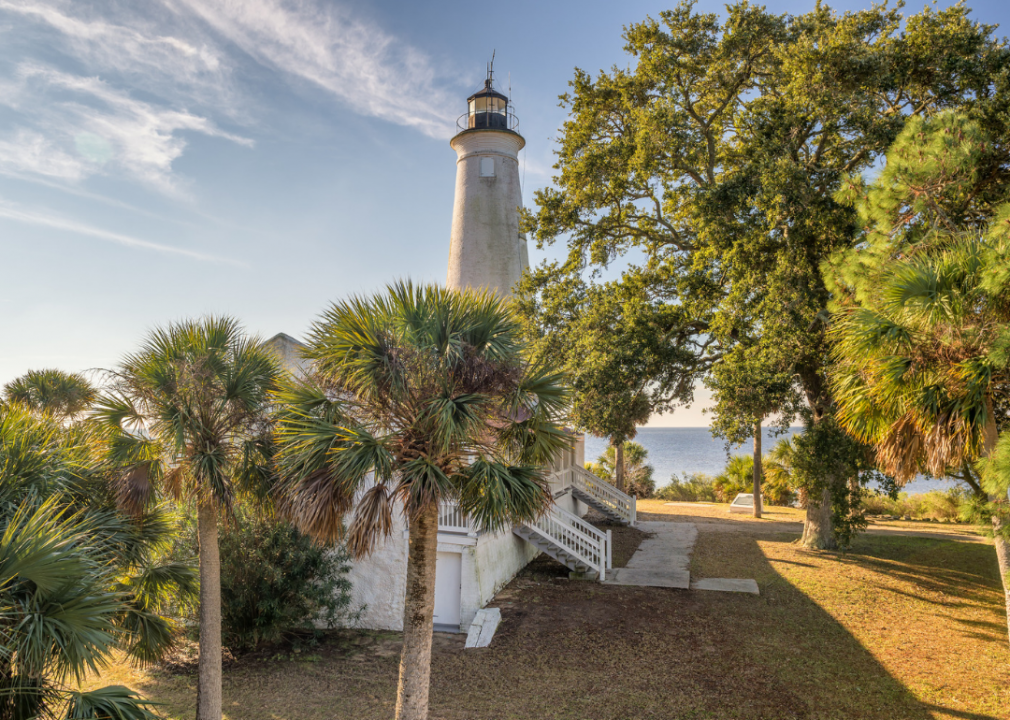
Nick Fox // Shutterstock
1639: St. Marks, FL
There’s evidence to suggest Indigenous people first came to St. Marks around 10,000 years ago, but the first European explorers to see the area arrived in 1528. Spanish missionaries settled the area, and Spanish forts soon followed.
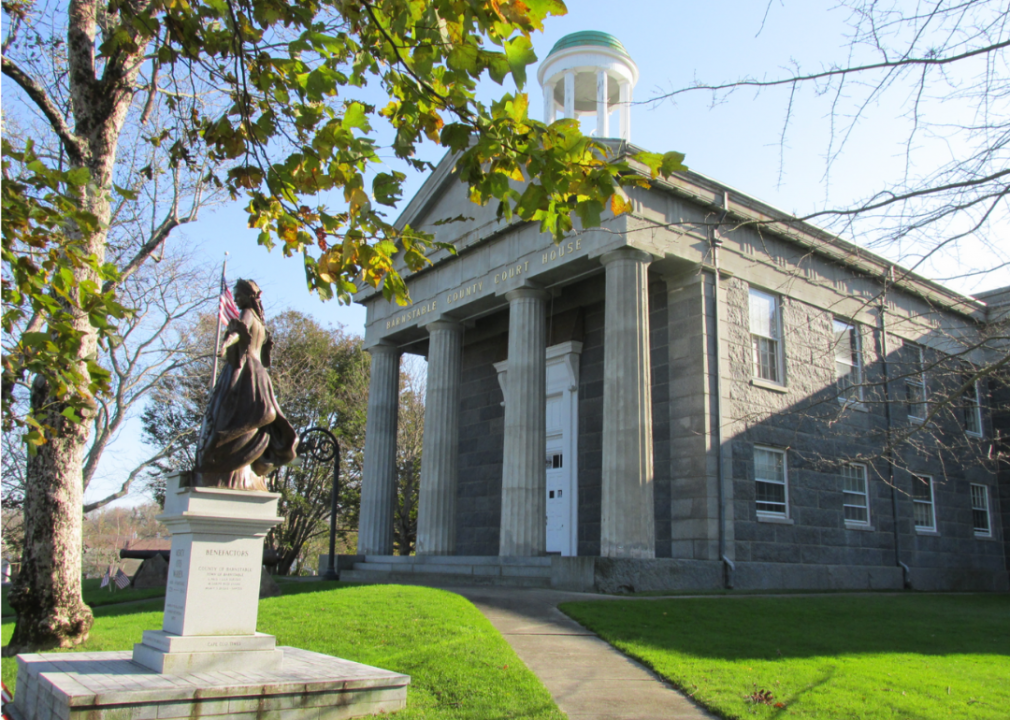
John Phelan // Wikimedia Commons
1639: Barnstable, MA
The Plymouth colony granted the first settlers in the area the right to set up the town of Barnstable in 1639 after purchasing the land from the local Native American tribes. Barnstable became the county seat.
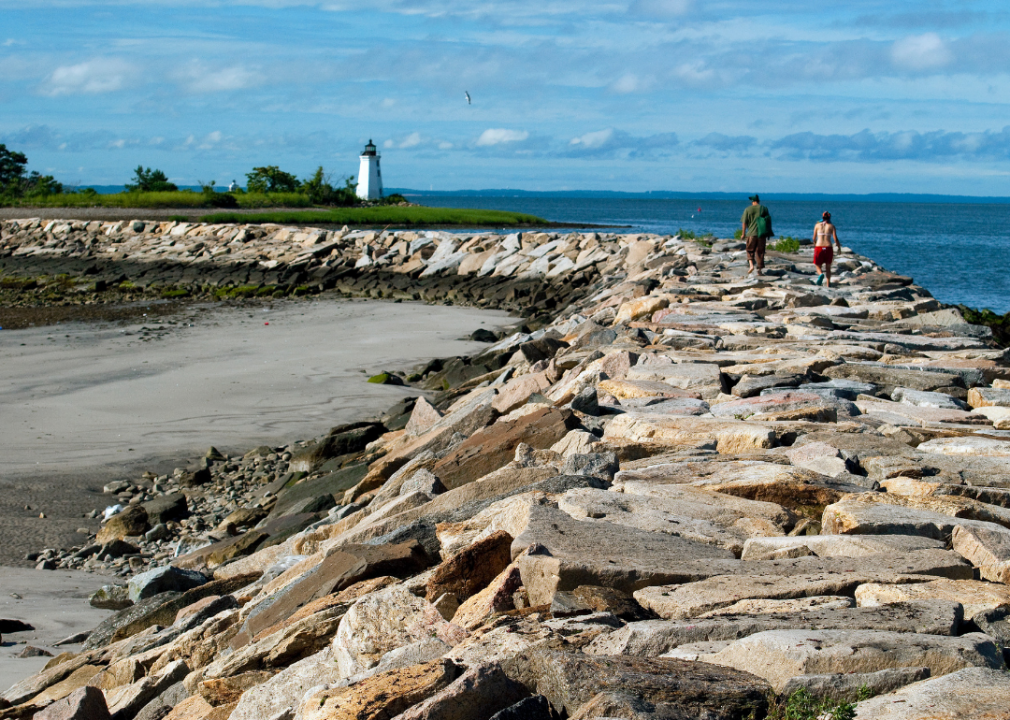
Allan Wood Photography // Shutterstock
1639: Bridgeport, CT
Connecticut’s most populous city, Bridgeport was first settled under the name Stratford by local farmers and fishermen. In the 1800s, Bridgeport transitioned into a manufacturing hub and an industrial center after the railroad came to town in 1840.
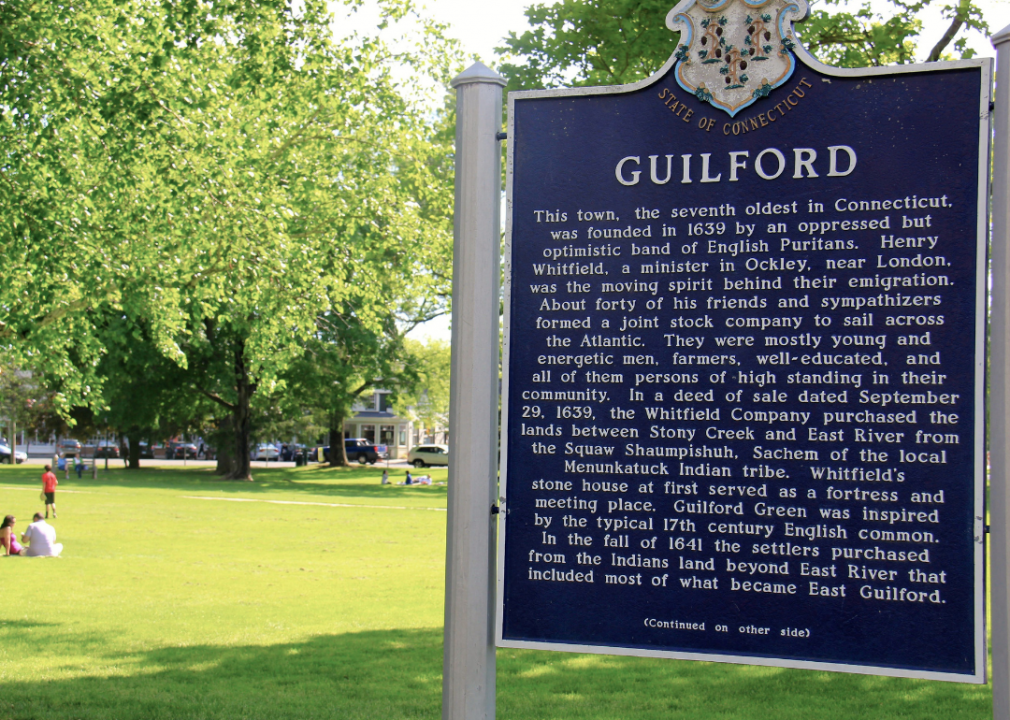
goodstreetsorg // Flickr
1639: Guilford, CT
The Quinnipiac tribe sold the land for Guilford to Puritan settlers in 1639, when it was known as Menunkatucket. The new residents of Guilford took their civic duty seriously during the Revolutionary War, organizing a raid on British provisions stored at Sag Harbor.
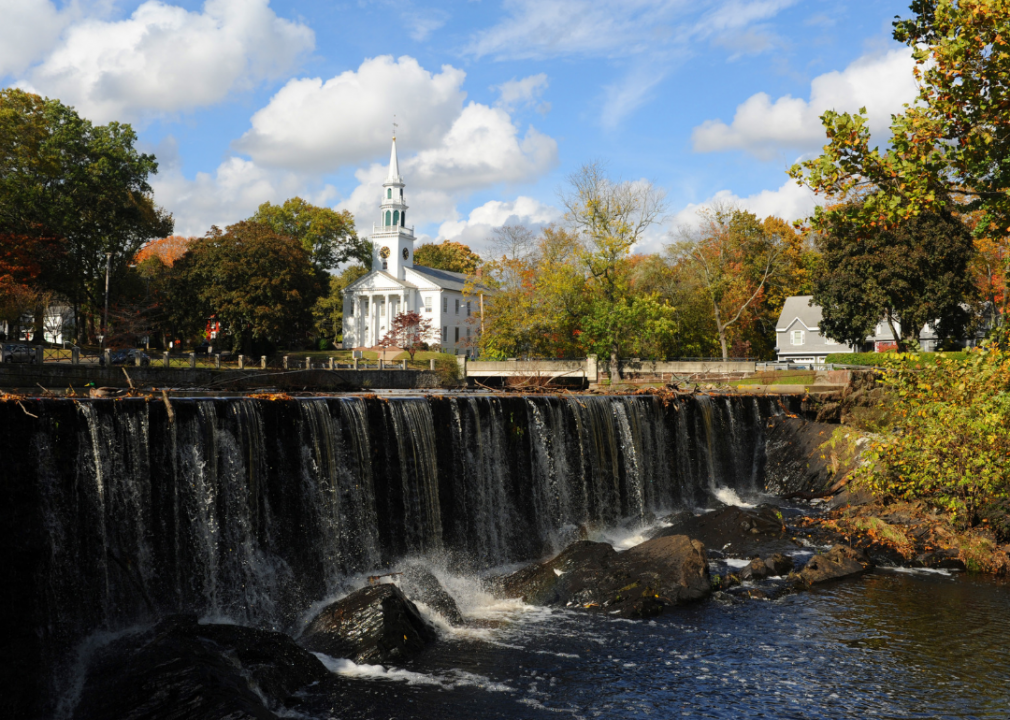
Joe Tabacca // Shutterstock
1639: Milford, CT
A thriving shipbuilding, oyster farming, and farming community, Milford was also known as a beach getaway town in the 1800s. In the 1900s, the town became a suburb and home to several large companies like Schick, the shaving company.
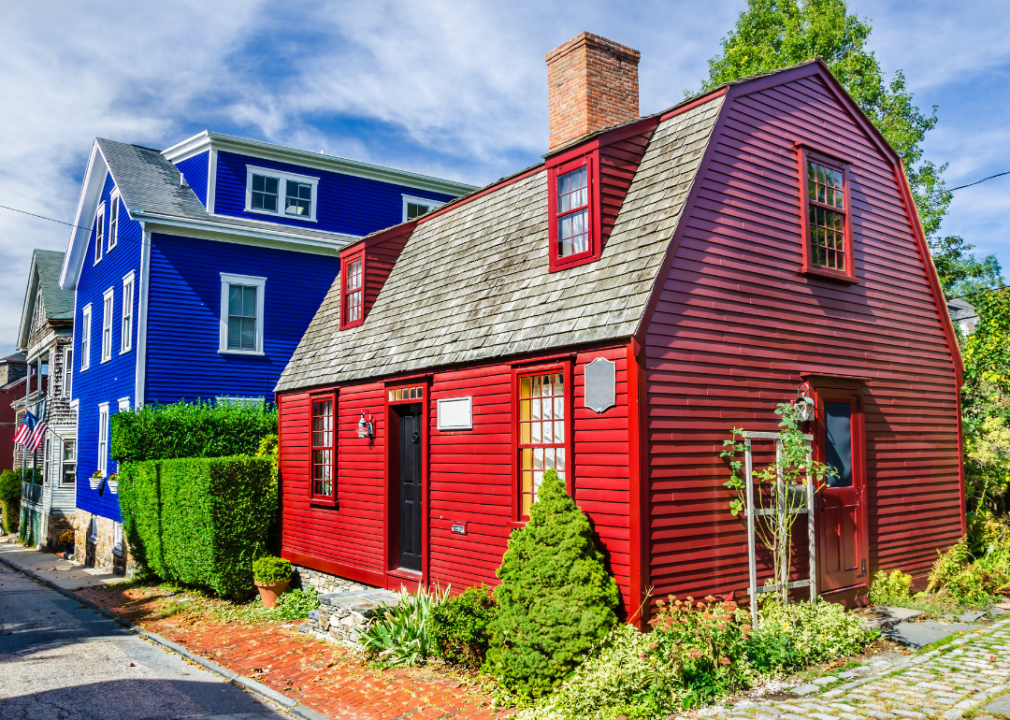
Albert Pego // Shutterstock
1639: Newport, RI
After Anne Hutchinson was forced to leave Boston for her religious beliefs, she led a group of English settlers to Rhode Island, where they founded the city of Newport in 1639. Due to its origins, Newport has always been a place of religious tolerance. The bustling waterfront made this city a hotspot for trade and the export of silver, rum, candles, fish, and other goods in the 1700s.
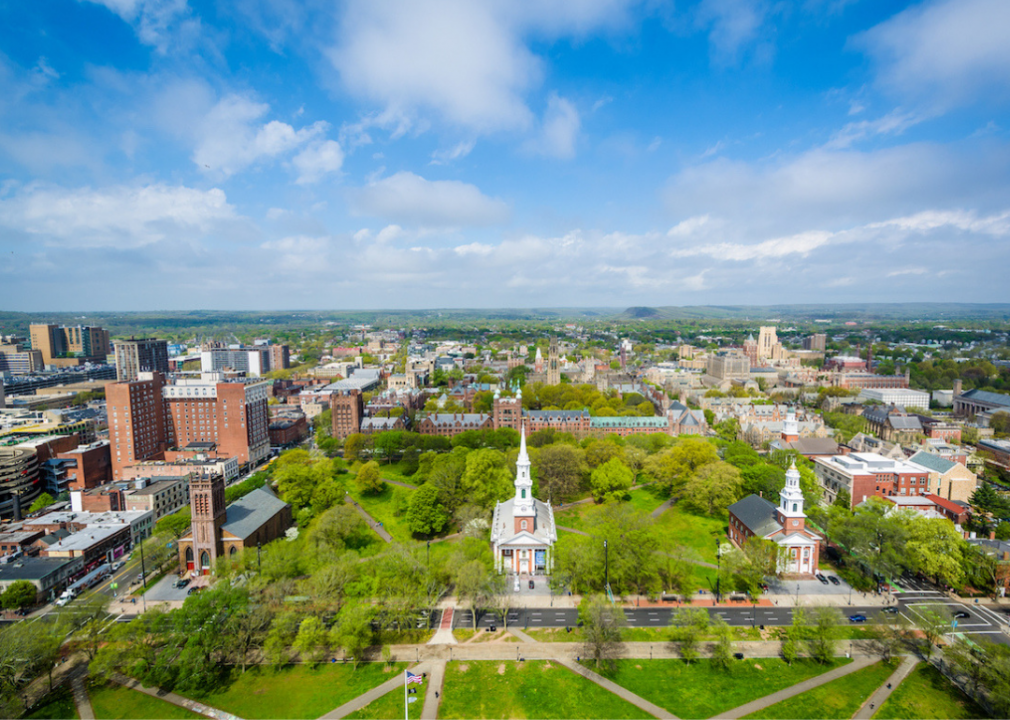
Jon Bilous // Shutterstock
1638: New Haven, CT
New Haven was founded by Puritans in 1638. They used a grid called the “Nine Square Plan” to lay out the town; this qualifies the city as America’s first planned town. New Haven is also the home to Yale University and is well known for its particular style of pizza.
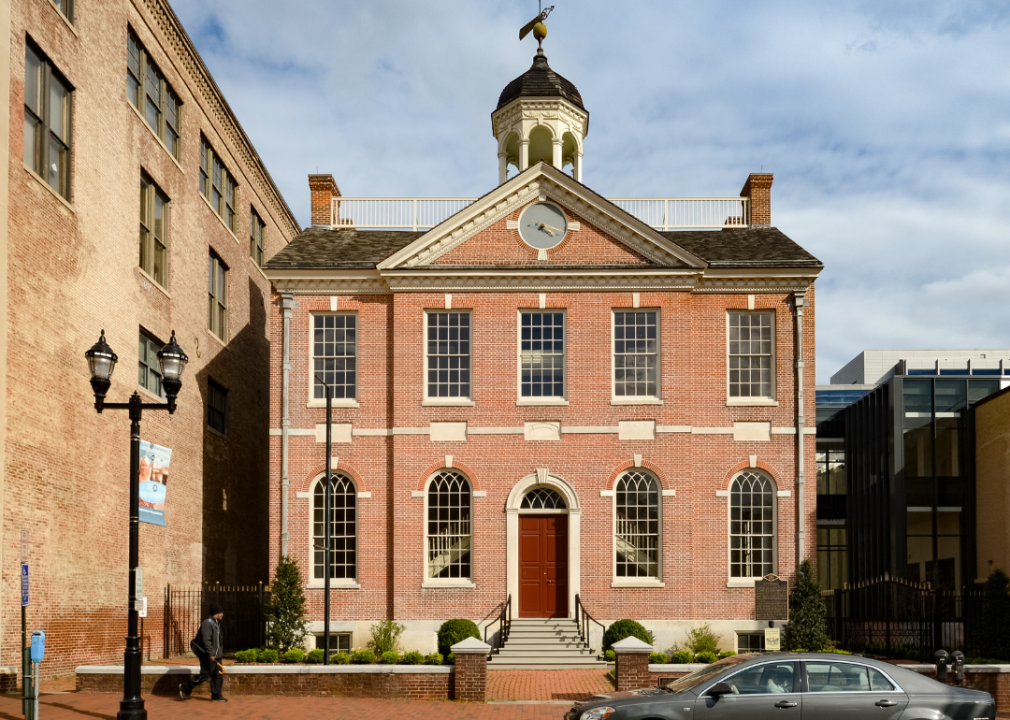
xiquinhosilva // Flickr
1638: Wilmington, DE
The Swedish first colonized Wilmington in 1638; the Dutch followed soon after in 1655, and the British eventually arrived in 1664. Wilmington’s milling resources and strategic position made it particularly valuable during the Revolutionary War.
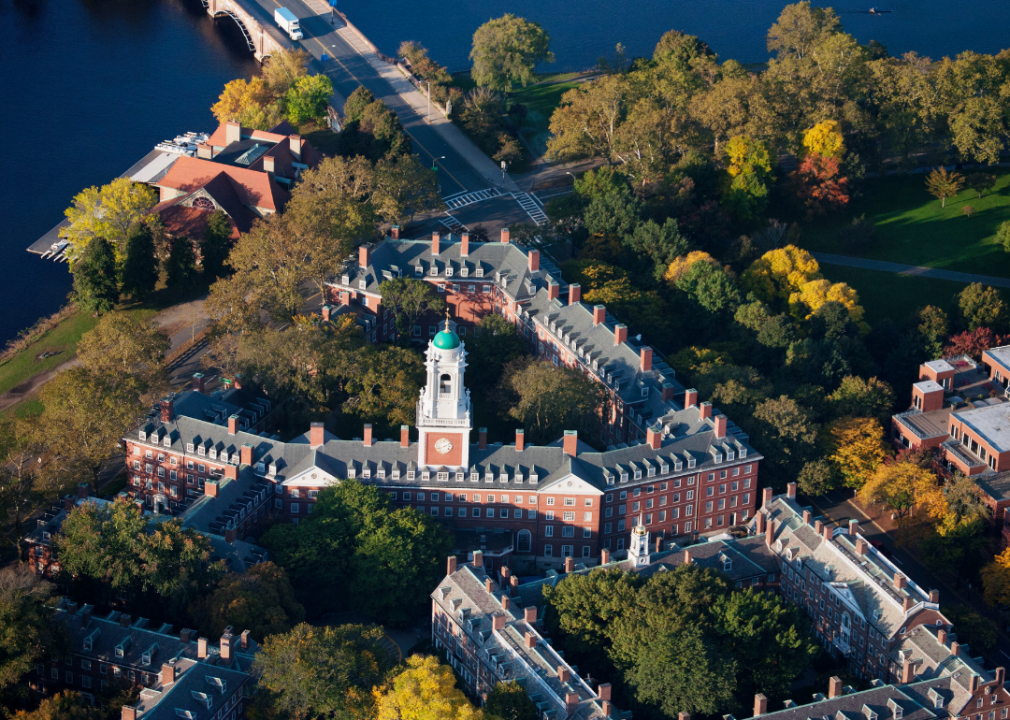
Joseph Sohm // Shutterstock
1638: Cambridge, MA
The Puritans who set up the first settlement in Cambridge referred to the town as Newtowne until 1638, when the name was changed. Harvard was founded here—before the town itself—in 1636.
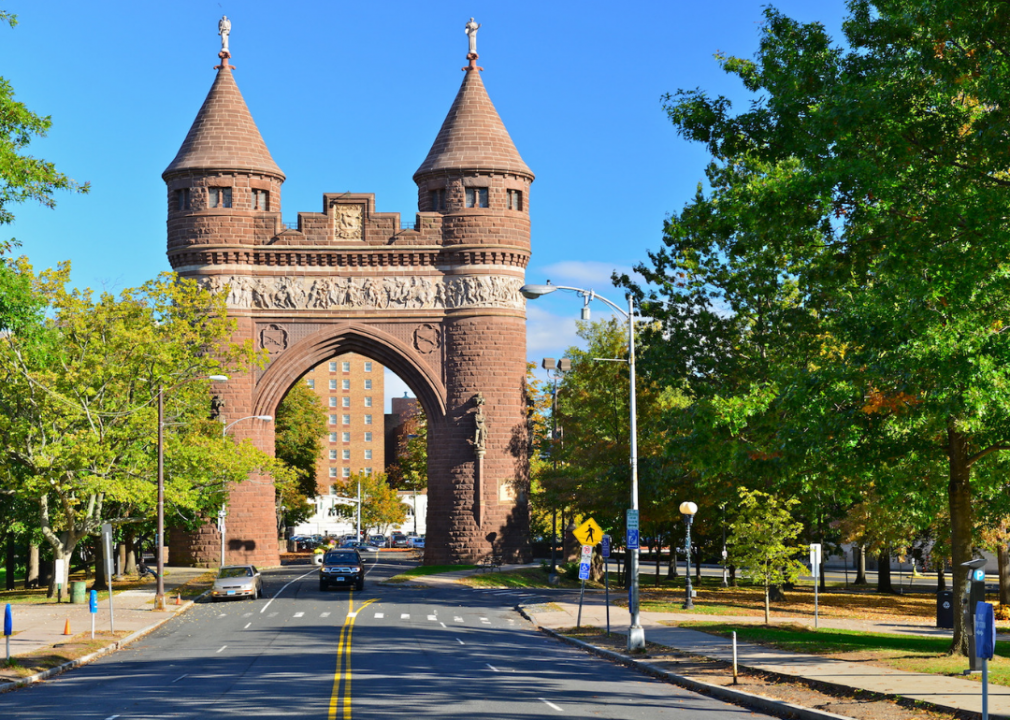
Richard Cavalleri // Shutterstock
1637: Hartford, CT
The first English settlers of Hartford chose the area between the Connecticut River and the Park River because the land was fertile enough to farm. In the 18th century, the riverfront turned into a bustling trade center; later, a wave of Irish immigrants settled there, and factories and manufacturing plants sprung up.
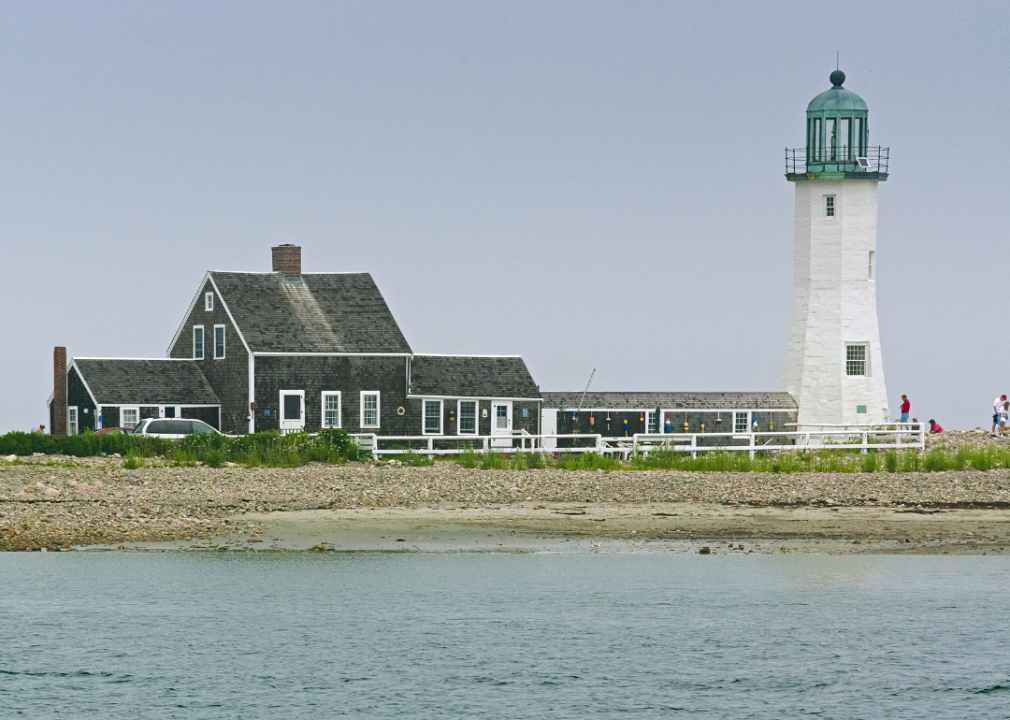
Tom Zeman // Shutterstock
1636: Scituate, MA
This town’s unique name comes from the Native American word meaning “cold brook,” and early settlers there chose to live near a small stream flowing into Cape Cod Bay. Several miles of shoreline make Scituate a beautiful place to live or visit.
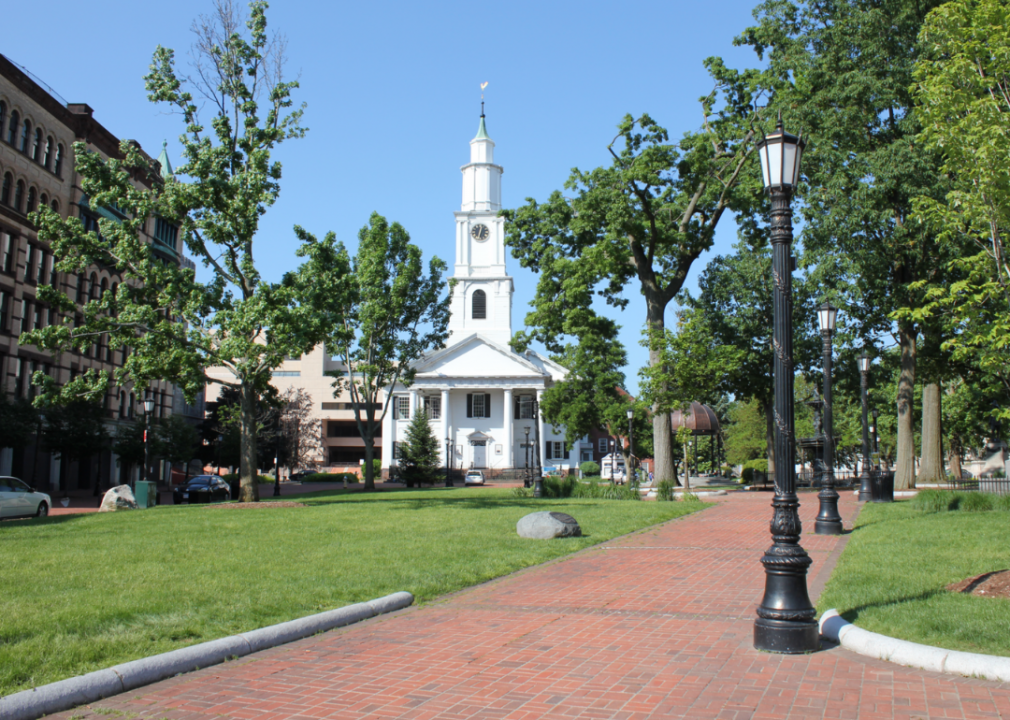
Dms1788 // Shutterstock
1636: Springfield, MA
Located midway between New York City and Boston, Springfield is the perfect location for many residents. Early settlers used the Connecticut River to travel and transport goods, while the introduction of the railroad in the 19th century made Springfield a major travel center.
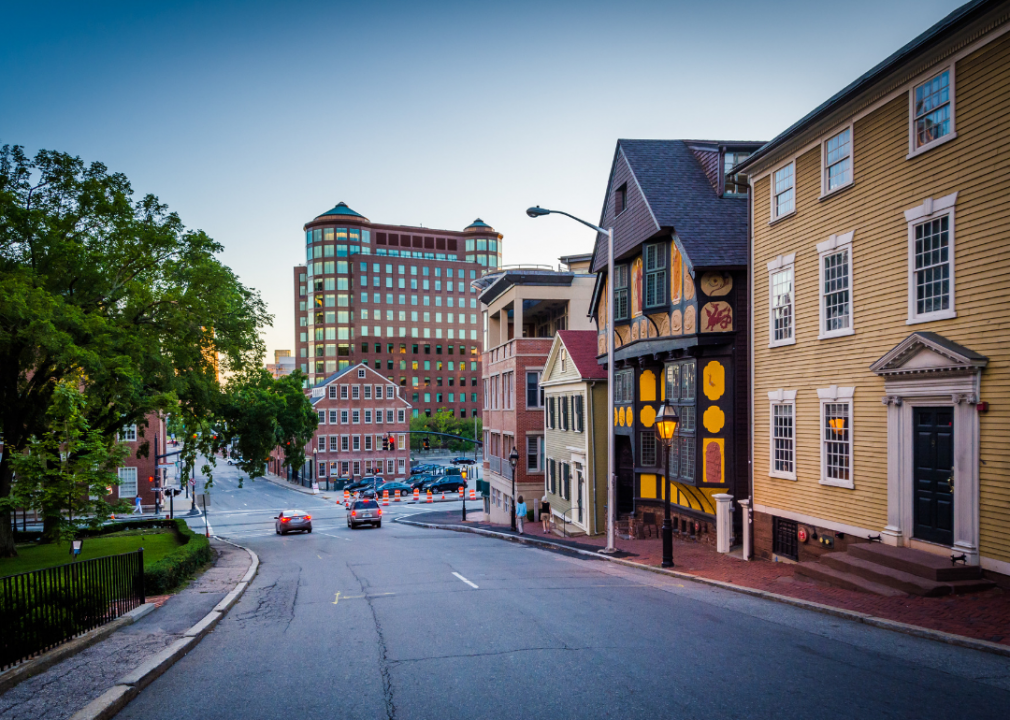
Jon Bilous // Shutterstock
1636: Providence, RI
Like Newport, Providence was founded by someone fleeing religious persecution in Boston: preacher Roger Williams. When he arrived, Williams thanked God for allowing him to find safety—hence the name Providence.
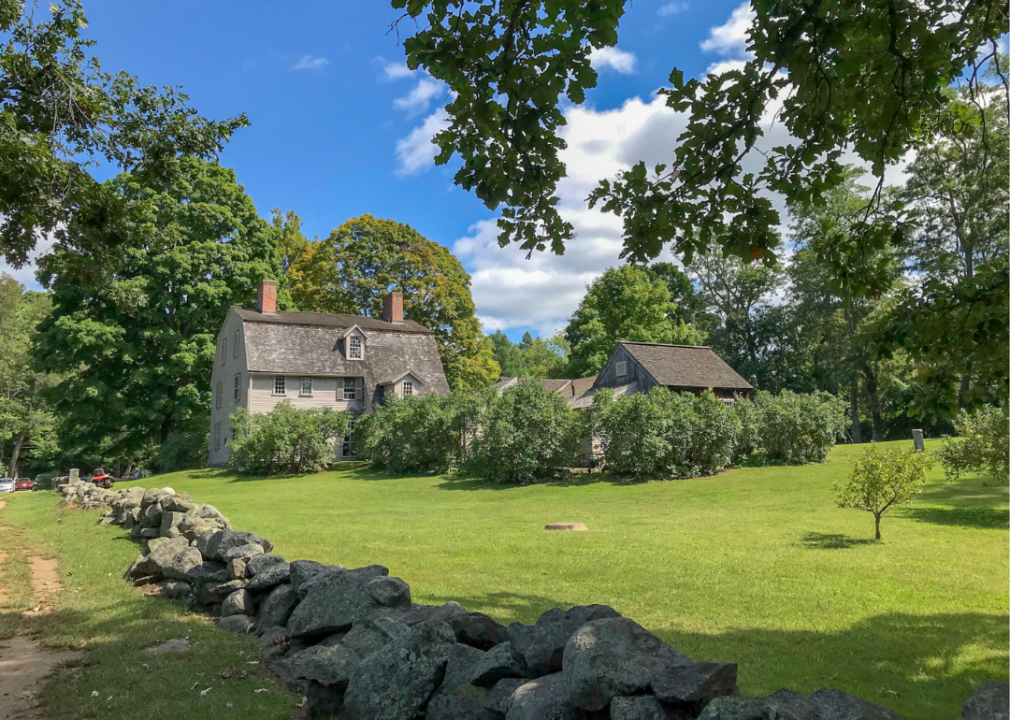
Karen Mayhall // Wikimedia Commons
1635: Concord, MA
Twelve original families settled in Concord, each of whom received a plot of land for a house and planting. They bargained to purchase the town with the local Pennacook tribe under a live oak called Jethro’s Tree. Today, a historical plaque marks the spot where the tree once stood.
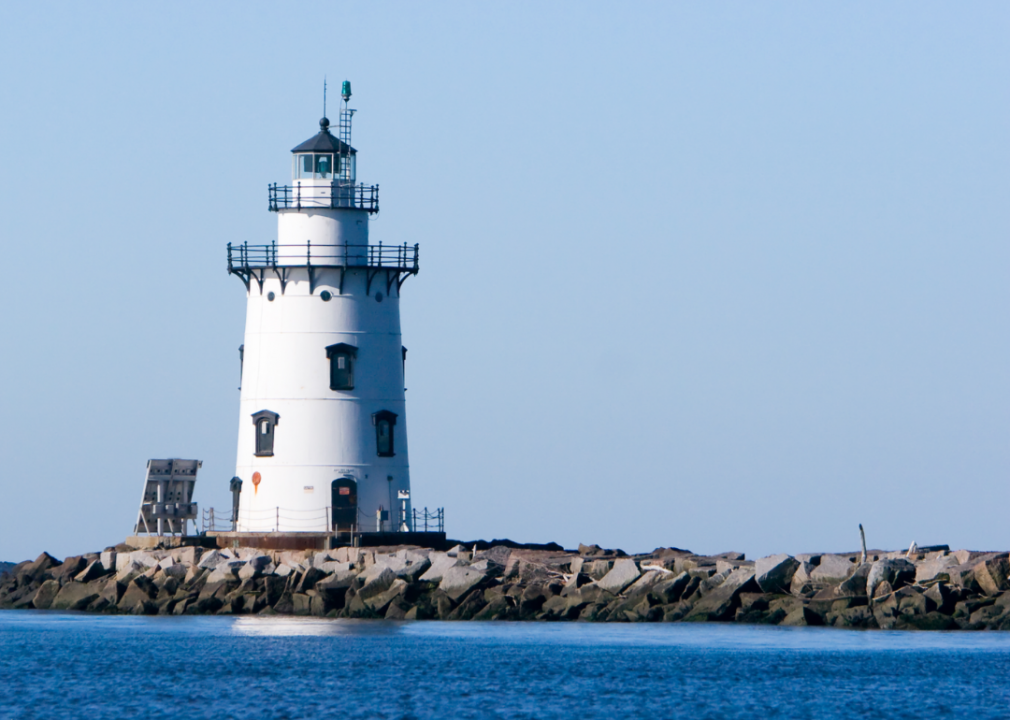
Juliejules // Wikimedia Commons
1635: Old Saybrook, CT
Old Saybrook first started as its own colony but joined Connecticut in 1644. Yale University also got its start here, though it was known simply as the Collegiate School until Elihu Yale made a generous donation to the university in 1718.
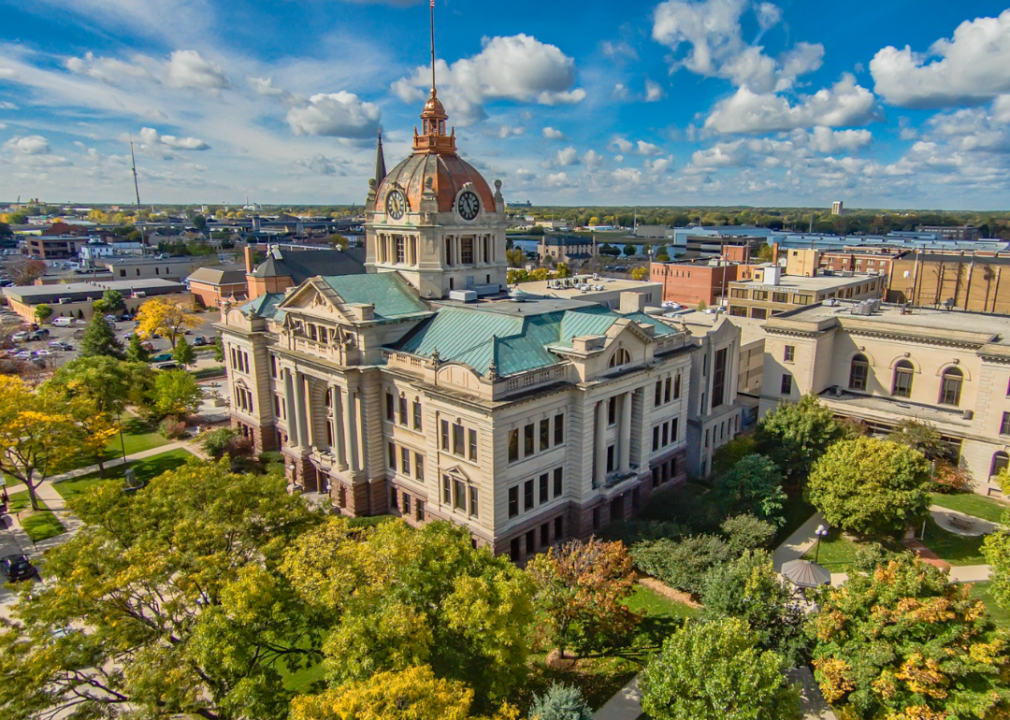
Chris Rand // Wikimedia Commons
1634: Green Bay, WI
The abundance of fish, birds, and wild rice in the area drew both the native Ho-Chunk people and French fur trappers and missionaries to Green Bay. Though the French were the first European settlers, the British took control in 1763.
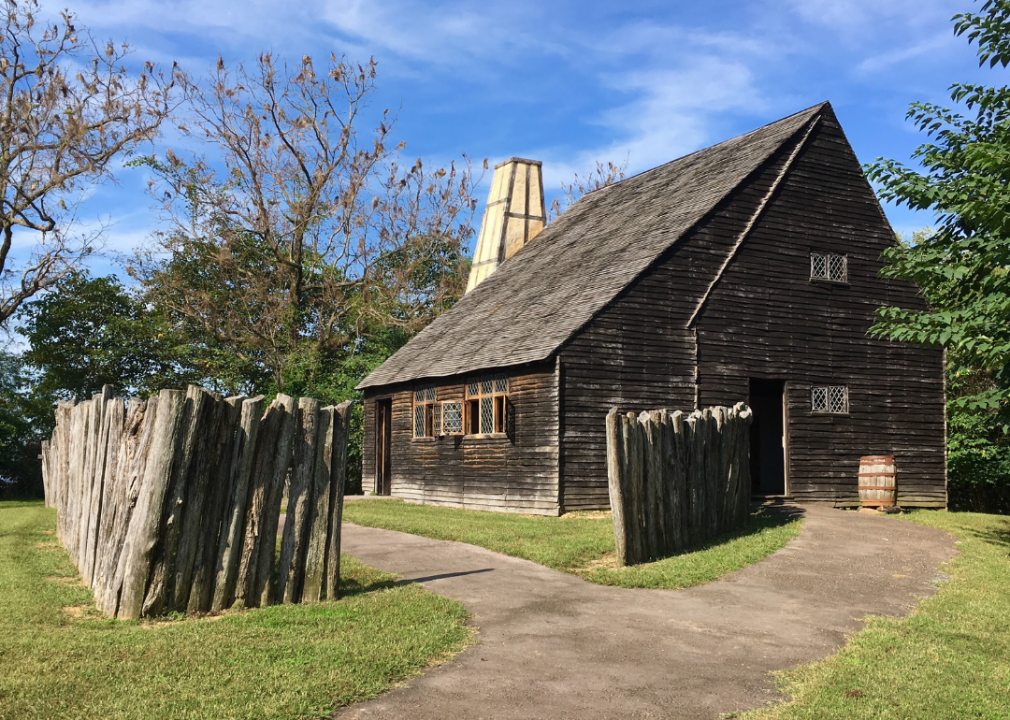
Jeffrey M. Frank // Shutterstock
1634: St. Mary’s City, MD
Named for the Virgin Mary, St. Mary’s City was the first European settlement in Maryland. It was also the colonial capital of Maryland until 1694, when it moved to Annapolis.
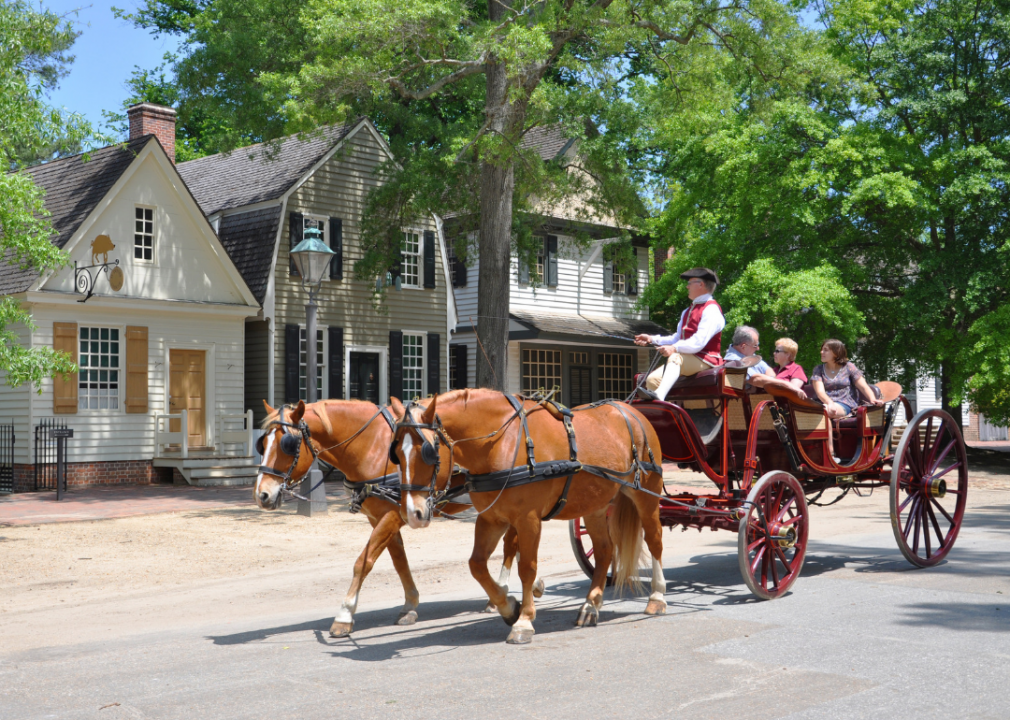
Wangkun Jia // Shutterstock
1632: Williamsburg, VA
This colonial city was originally called Middle Plantation but was renamed in honor of King William III in 1699 when it became the capital of the Virginia Colony. Presidents Thomas Jefferson, James Monroe, and John Tyler all studied at the prestigious College of William and Mary in Williamsburg as well.
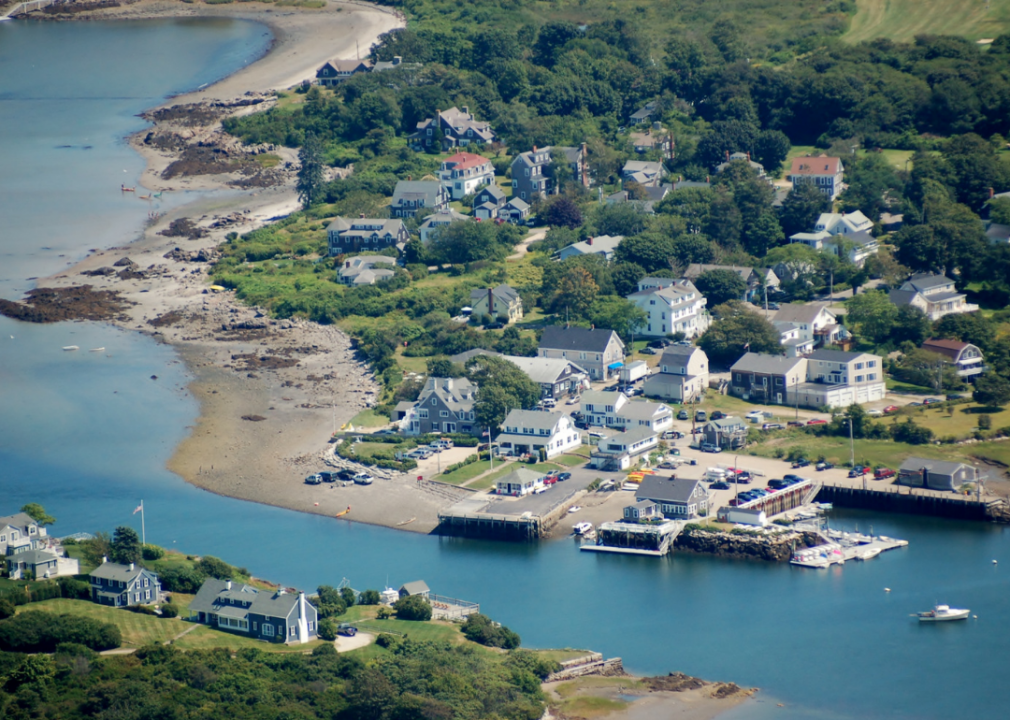
bruce_bruce948 // Flickr
1630: Biddeford, Maine
Biddeford was first settled by Richard Vines and John Oldham in 1630. The town quickly became a center of industry. Its economy was first dominated by the lumber business, but granite quarries, brickyards, and textile mills took over in the 19th century.
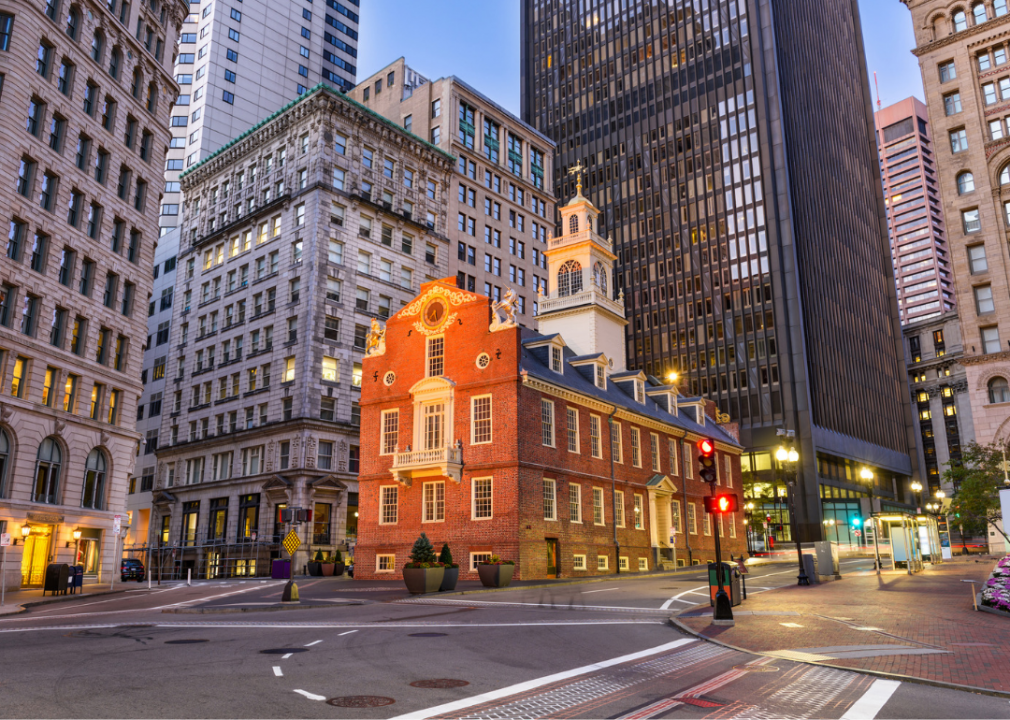
Sean Pavone // Shutterstock
1630: Boston, MA
When Puritans with the Massachusetts Bay Company established this city in 1630, they named it after their home in Lincolnshire, England—Boston. Many people living in the region took advantage of its location near the ocean, working as fishermen, shipbuilders, merchants, and seamen. Boston also became a major stop on the trade routes to the Caribbean and got the nickname Beantown from the Boston baked beans that locals would make with Caribbean molasses.
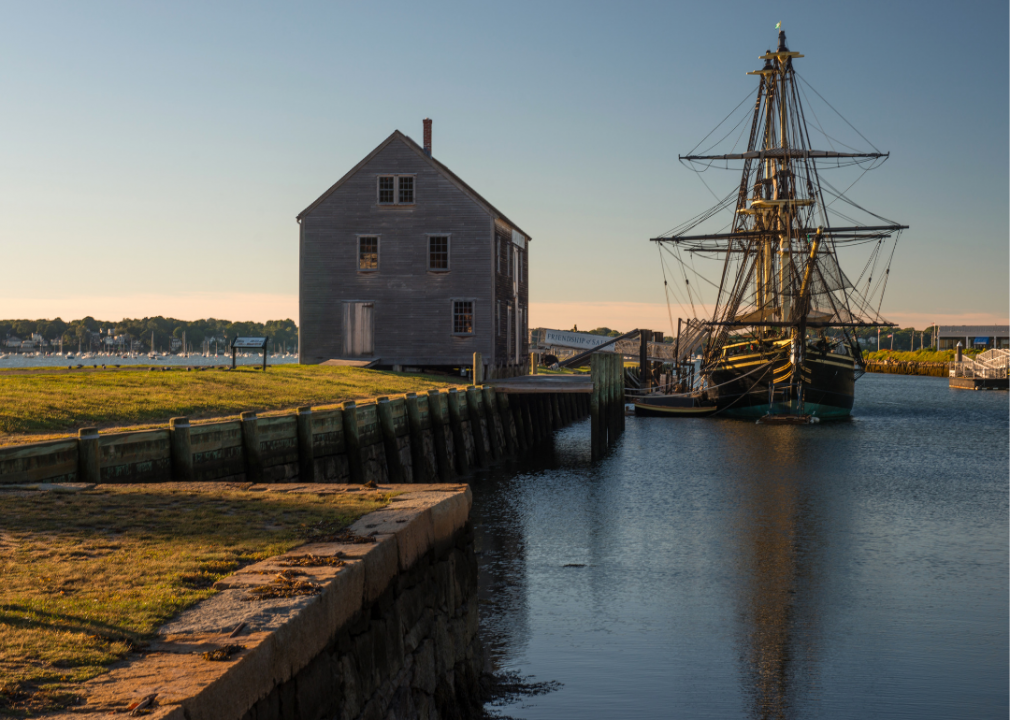
Richard Cavalleri // Shutterstock
1626: Salem, MA
Best known as the location of the most infamous witch trials in American history, Salem was founded by a group of immigrants from Cape Ann in 1626. Nineteen innocent people were hanged during the mass hysteria of the witch trials. Visitors still flock to Salem today to learn about how spectral evidence, teenage gossip, and religious beliefs allowed this tragedy to take place.
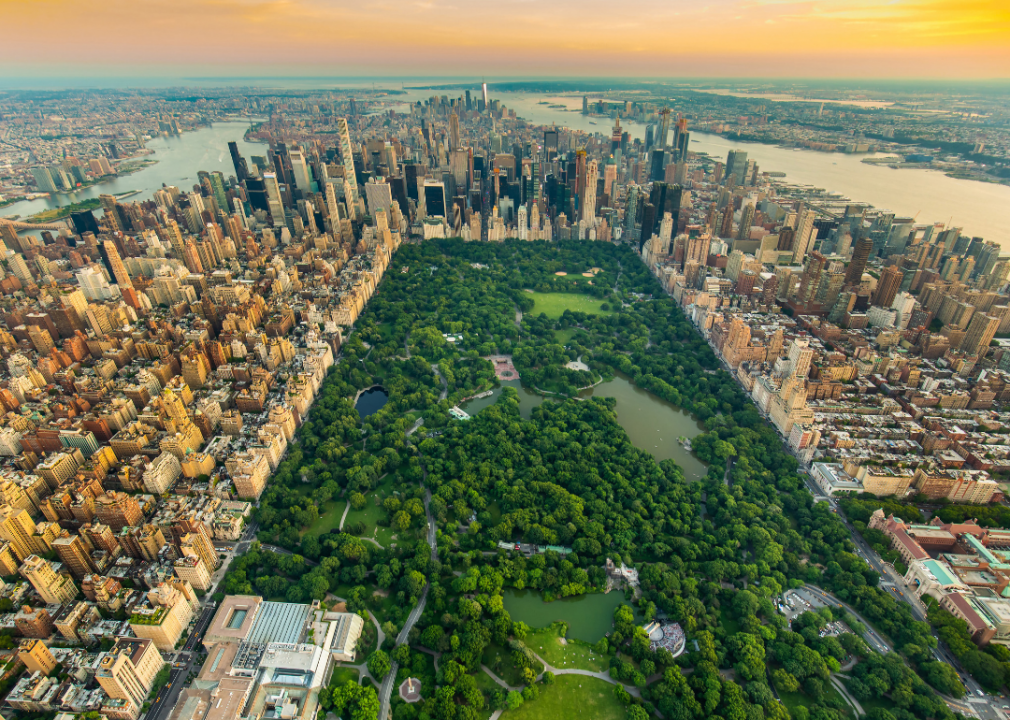
Photo Spirit // Shutterstock
1625: New York, NY
What we now call New York was originally founded as a Dutch colony and called New Amsterdam; it wasn’t renamed New York until the British took it over in 1664. Though it’s the home of sleek skyscrapers and high-rise apartments today, colonial-era New York was much dirtier and unruly. Alcohol was also made or sold from one out of every four buildings, making the settlement a bit of a drunken mess.
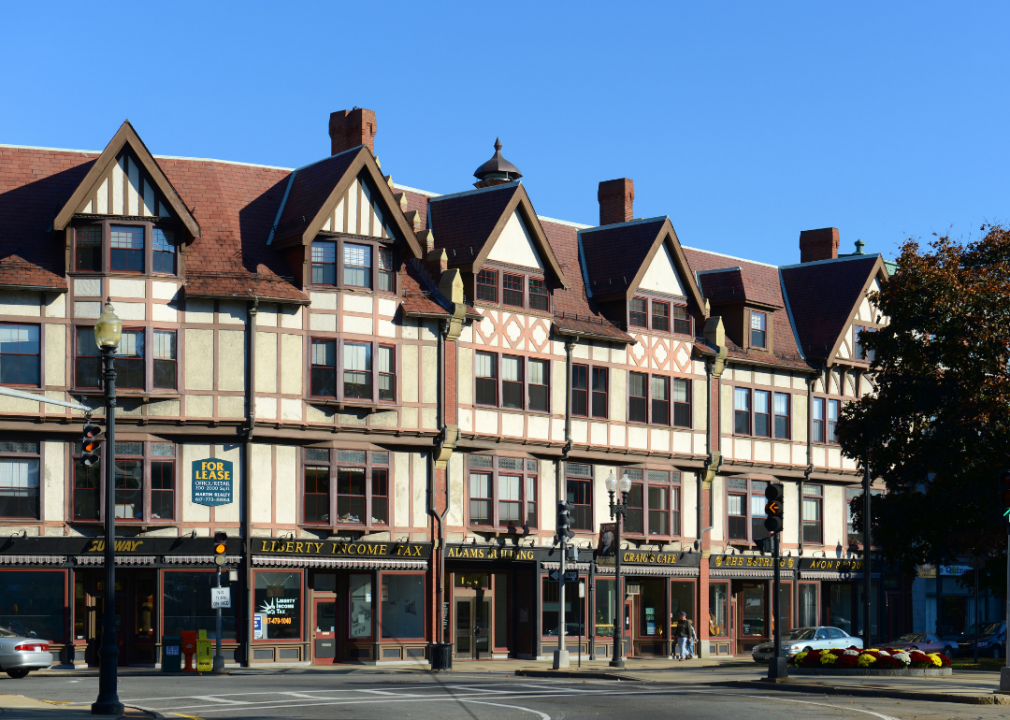
Wangkun Jia // Shutterstock
1625: Quincy, MA
This Massachusetts town was first settled by workers in the employ of Capt. Richard Wollaston and the colorful but controversial adventurer Thomas Morton. Morton established a trading post in Quincy that operated quite successfully until the townspeople discovered he had sold firearms to the local Native American people. He was quickly sent back to England.
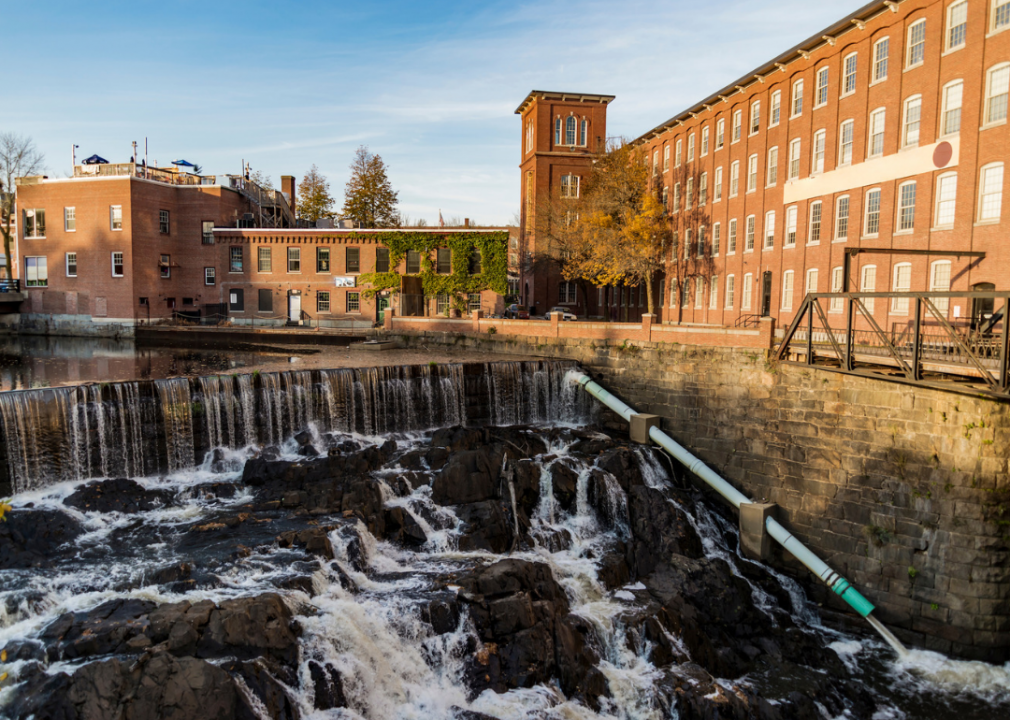
edella // Shutterstock
1623: Dover, NH
This town, located at the falls of the Cocheco River, was originally known as Bristol when it was settled in 1623. Dover residents faced Native American raids and attacks between 1675 and 1725, but the town became a thriving center for shipbuilding.
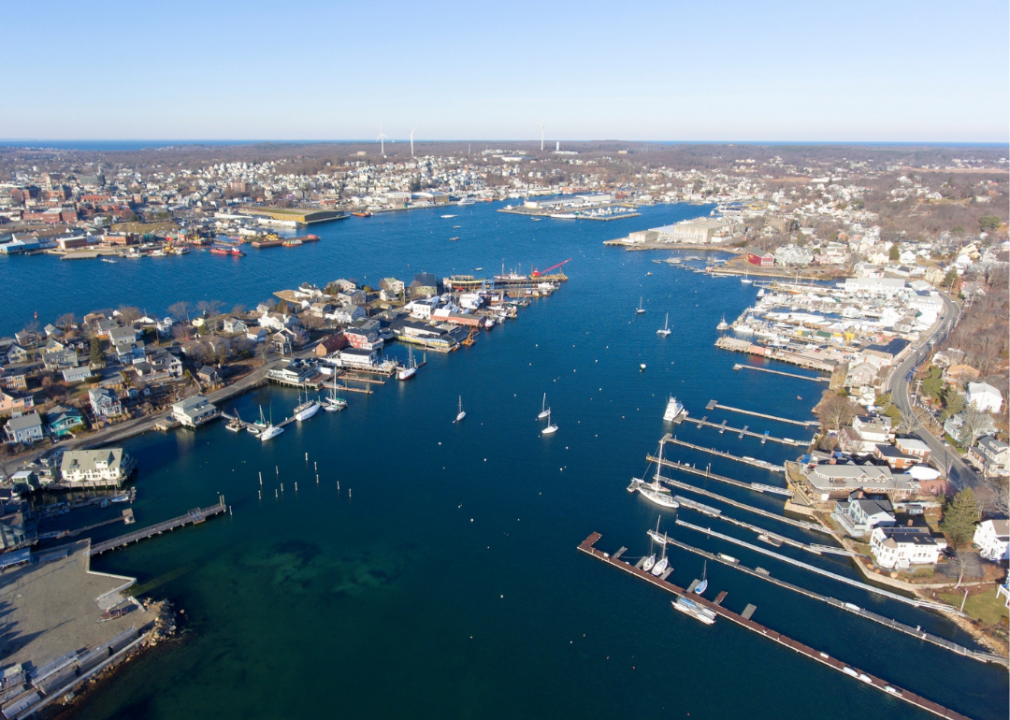
Wangkun Jia // Shutterstock
1623: Gloucester, MA
Named after the English town of the same name, Gloucester has been a maritime and fishing center for its entire history. In the 19th century, Portuguese and Italian immigrants flocked to Gloucester for fishing jobs, and their heritages still have a big impact on the city’s culture today.
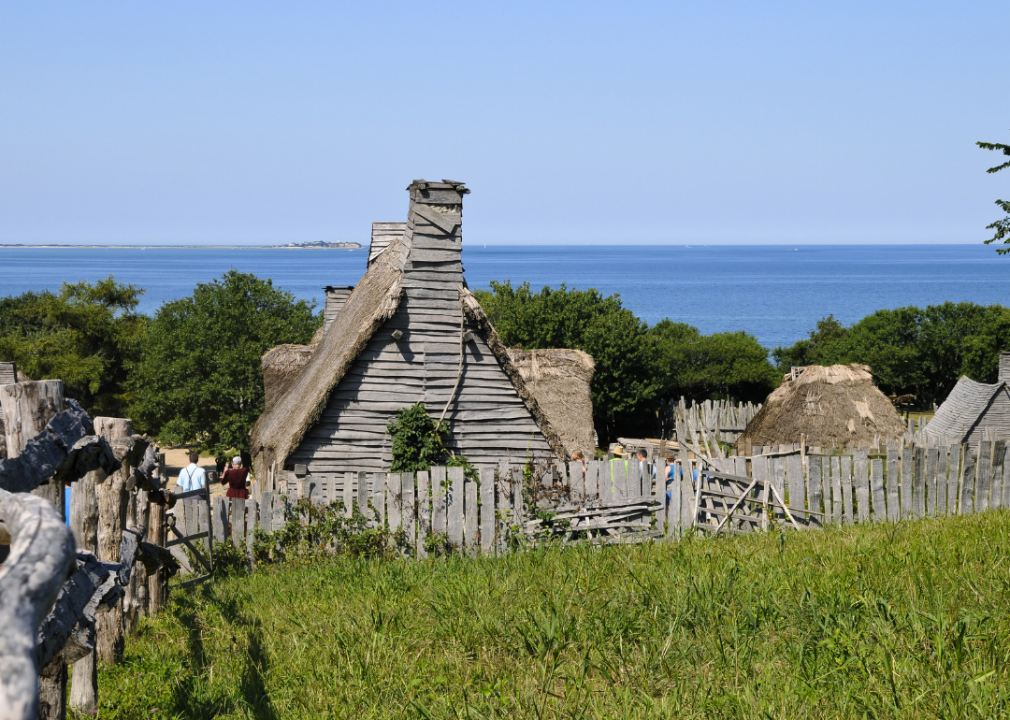
Andreas Juergensmeier // Shutterstock
1620: Plymouth, MA
Perhaps the most famous pilgrim settlement in the United States, Plymouth was settled by a group who crossed the Atlantic Ocean on the Mayflower. They were originally bound for Virginia but got off course, and since winter was approaching and they were running out of supplies, they settled in Massachusetts. Plymouth was also the site of the first Thanksgiving in 1621.
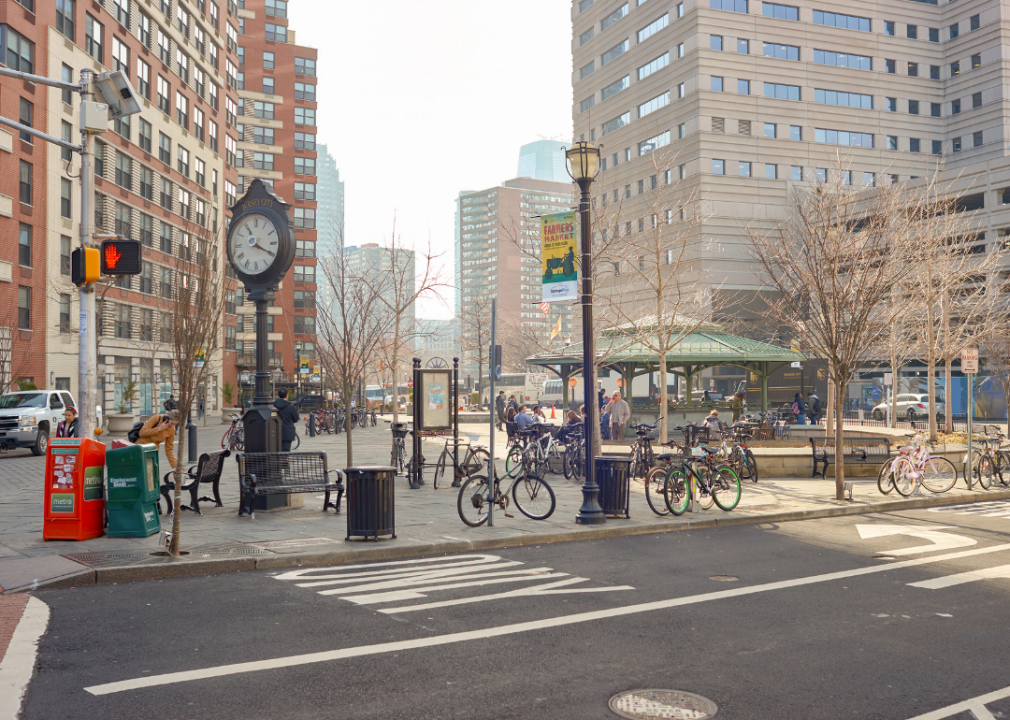
Sorbis // Shutterstock
1618: Jersey City, NJ
Jersey City actually predates New York City, its neighbor across the Hudson River. Dutch trappers first took up residence here in 1618.
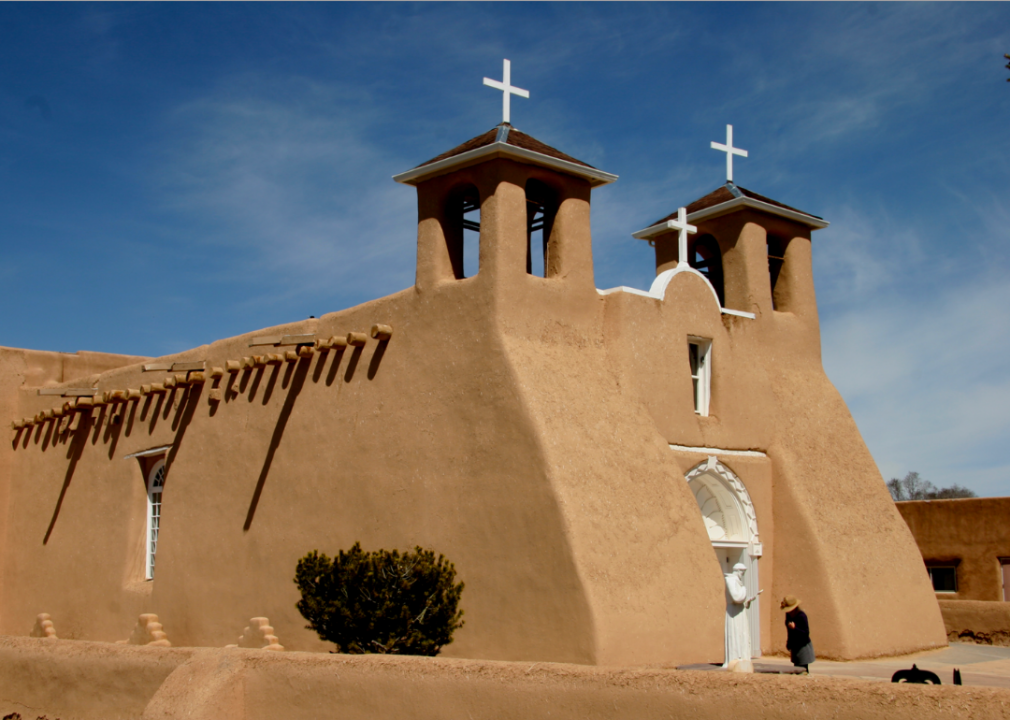
Khlnmusa // Wikimedia Commons
1615: Taos, NM
Though the Spanish town of Taos wasn’t established until 1615, the native Tiwa had been living there for hundreds of years prior. The first European to set foot in the area was Capt. Hernando Alvarado who was awed by the towering pueblos when he arrived on a Spanish expedition in 1540.
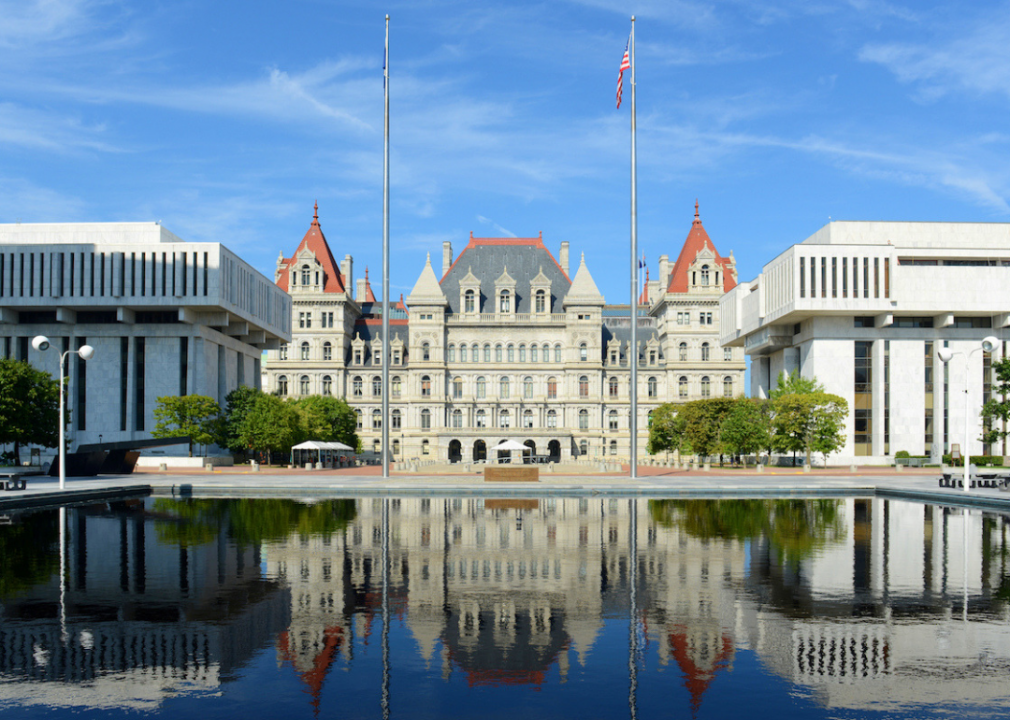
Wangkun Jia // Shutterstock
1614: Albany, NY
Dutch fur traders established the first settlement in what is present-day Albany with the building of Fort Nassau in 1614. The New York state capital was established here in the 1880s.
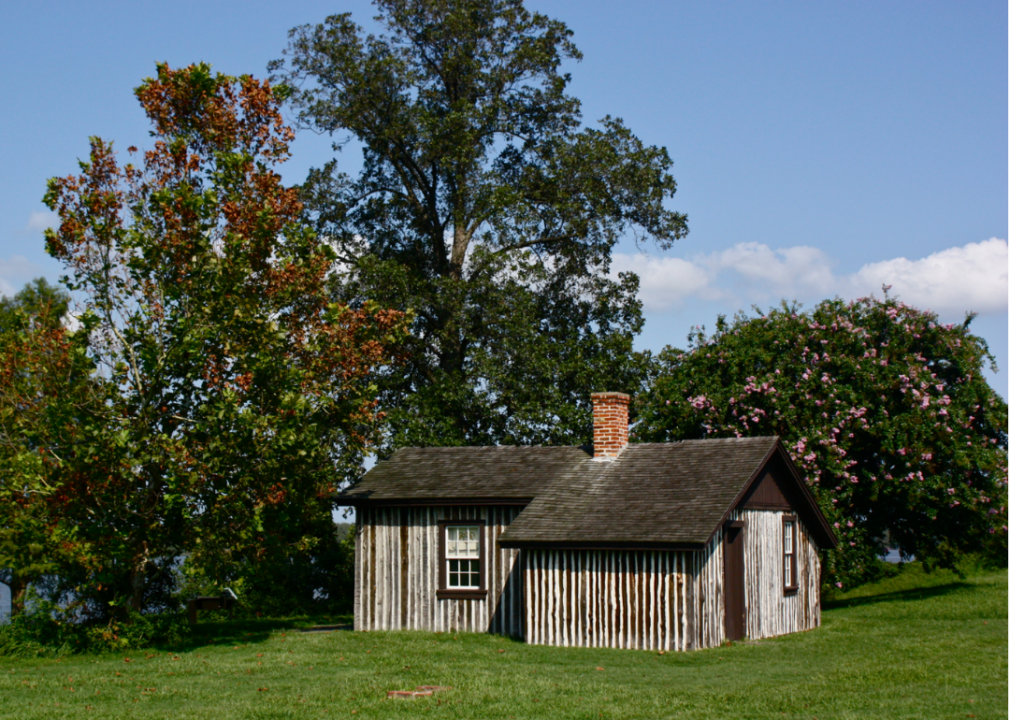
Alana Iesu // Wikimedia Commons
1613: Hopewell, VA
Sir Thomas Dale, an English naval commander, founded the City Point district of Hopewell in 1613. More than 200 years later, Ulysses S. Grant directed the Siege of Petersburg from the Appomattox Plantation in Hopewell.
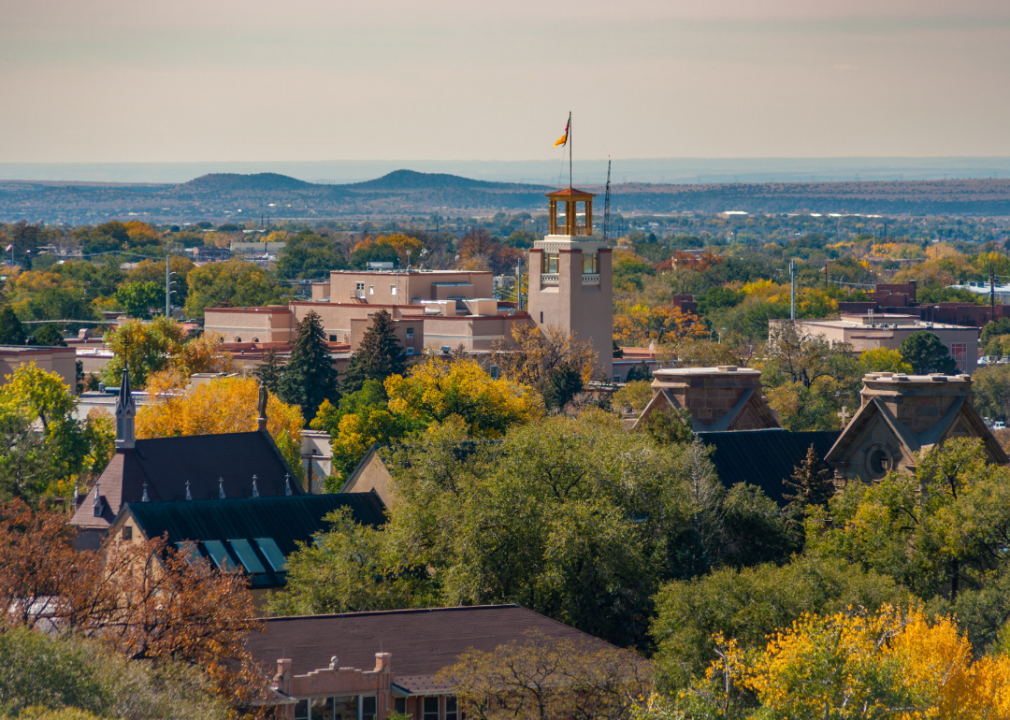
Jimack // Shutterstock
1610: Santa Fe, NM
Native Americans were the first residents of the area that would become present-day Santa Fe, but most historians believe that their pueblos were abandoned some 200 years before it was founded. Estimates aren’t clear exactly when Santa Fe was founded, but we know that Governor General of New Mexico Don Pedro de Peralta made it the state’s capital city in 1610.
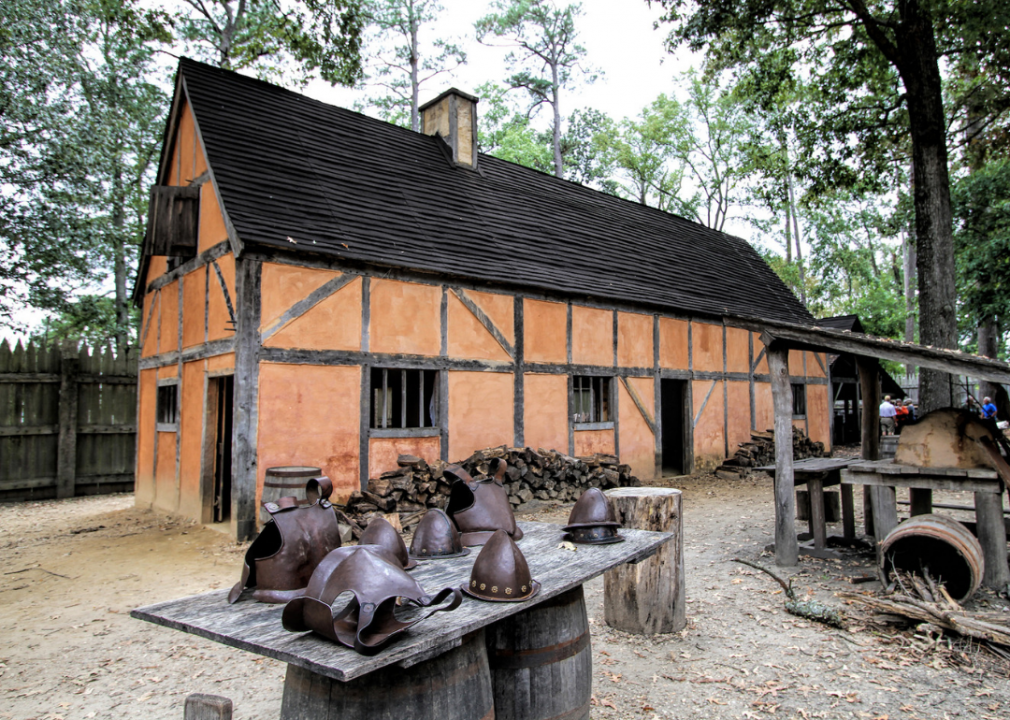
Kathy Clark // Shutterstock
1607: Jamestown, VA
The first settlement by the Virginia Company in the New World, Jamestown was chosen for its easily defensible location. Though no Native American tribes lived on the land, it was the hunting land of the local Powhatan. The first few years were rough for the settlers—many of whom succumbed to disease and starvation—until John Rolfe began growing tobacco and made the settlement profitable.
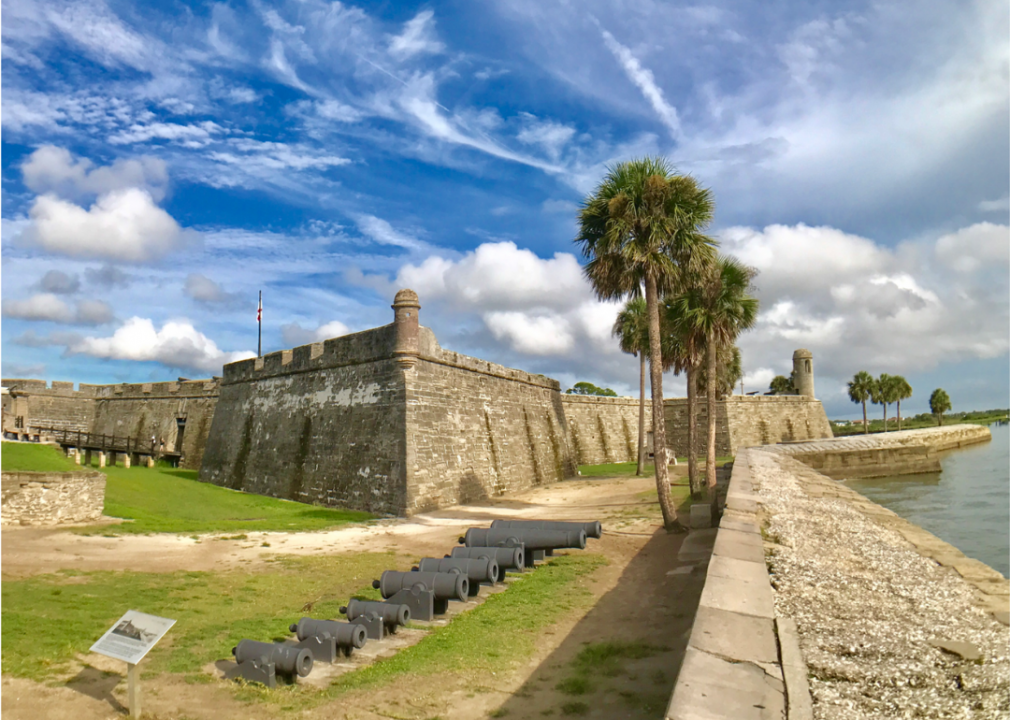
Elena Panchenko // Wikimedia Commons
1565: Saint Augustine, FL
Widely considered the oldest continually inhabited city in the United States, Saint Augustine was first discovered by Juan Ponce de Leon in 1513 while he was searching for the Fountain of Youth. Though he claimed it for Spain, it wasn’t truly settled until conquistador Don Pedro Menendez de Aviles established a settlement there in 1565.
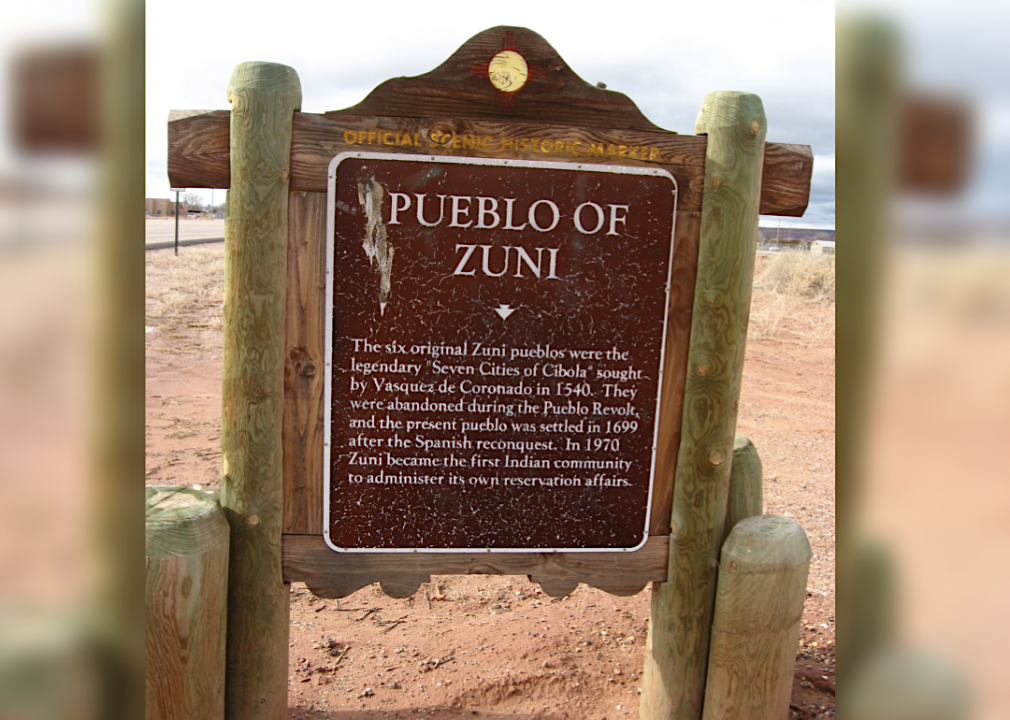
Ken L. // Flickr
1450: Zuni Pueblo, NM
The Zuni are believed to have descended from the Anasazi, the original Indigenous people who lived in pueblos in the Southwest. The Zuni Pueblo was the site of the first contact between Europeans and Indigenous people in the United States in 1540. Today, it maintains a tribal government and a 450,000-acre reservation.
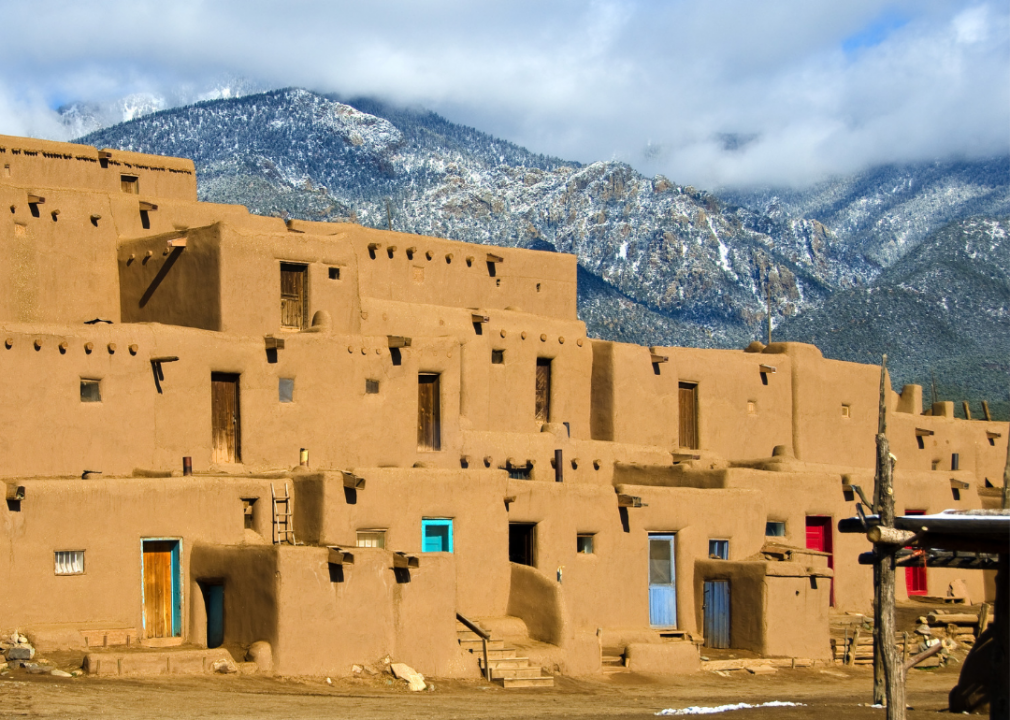
Dan Kaplan // Shutterstock
1000: Acoma Pueblo and Taos Pueblo, NM
New Mexico is home to 19 pueblos including Taos—the northernmost—and Acoma which is located on a 357-foot-high bluff and known as “Sky City.” A hand-cut staircase carved into the sandstone mesas was once the only way to access pueblo homes. Fewer than 50 residents live year-round in Acoma Pueblo, while about 150 people still live in Taos Pueblo.
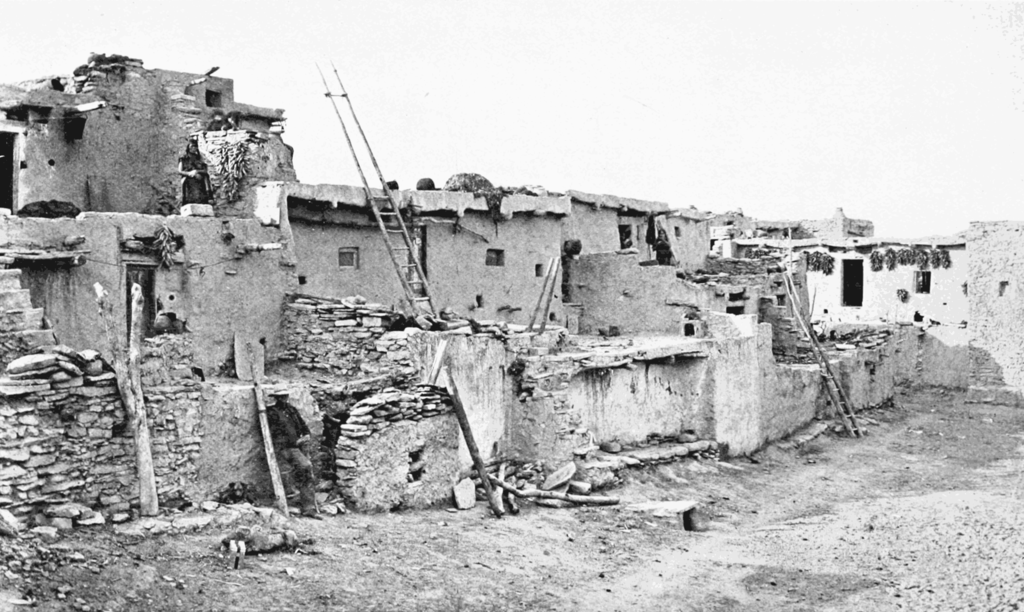
Unknown // Wikimedia Commons
1000: Oraibi
The village of Oraibi dates to around the year 1000 and has been continuously inhabited since then by the Hopi Native Americans. Located in northeast Arizona, Oraibi is situated at the top of a mesa and administered by a village chief. Nearby is the town of New Oraibi which was established following a tribal split in 1906.
